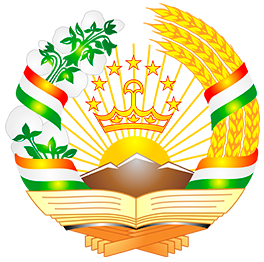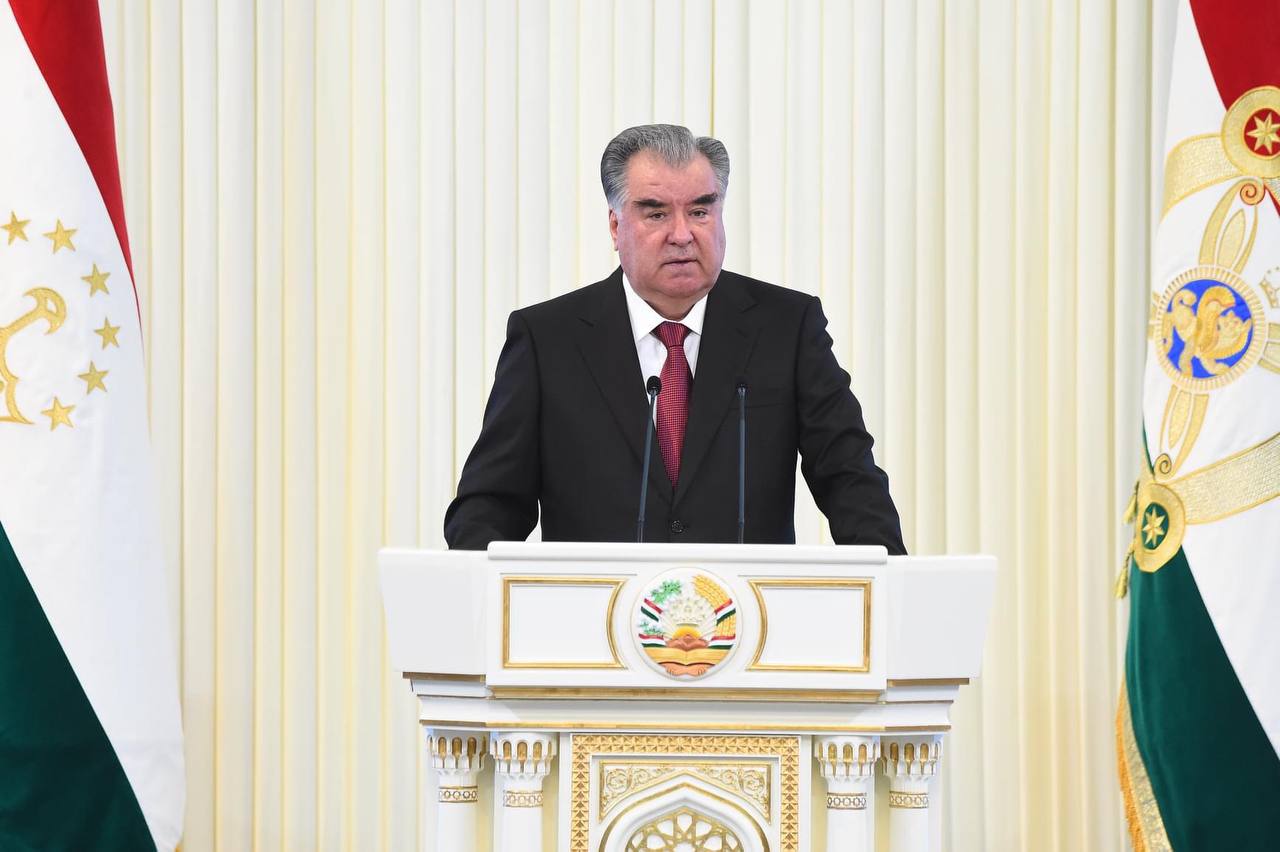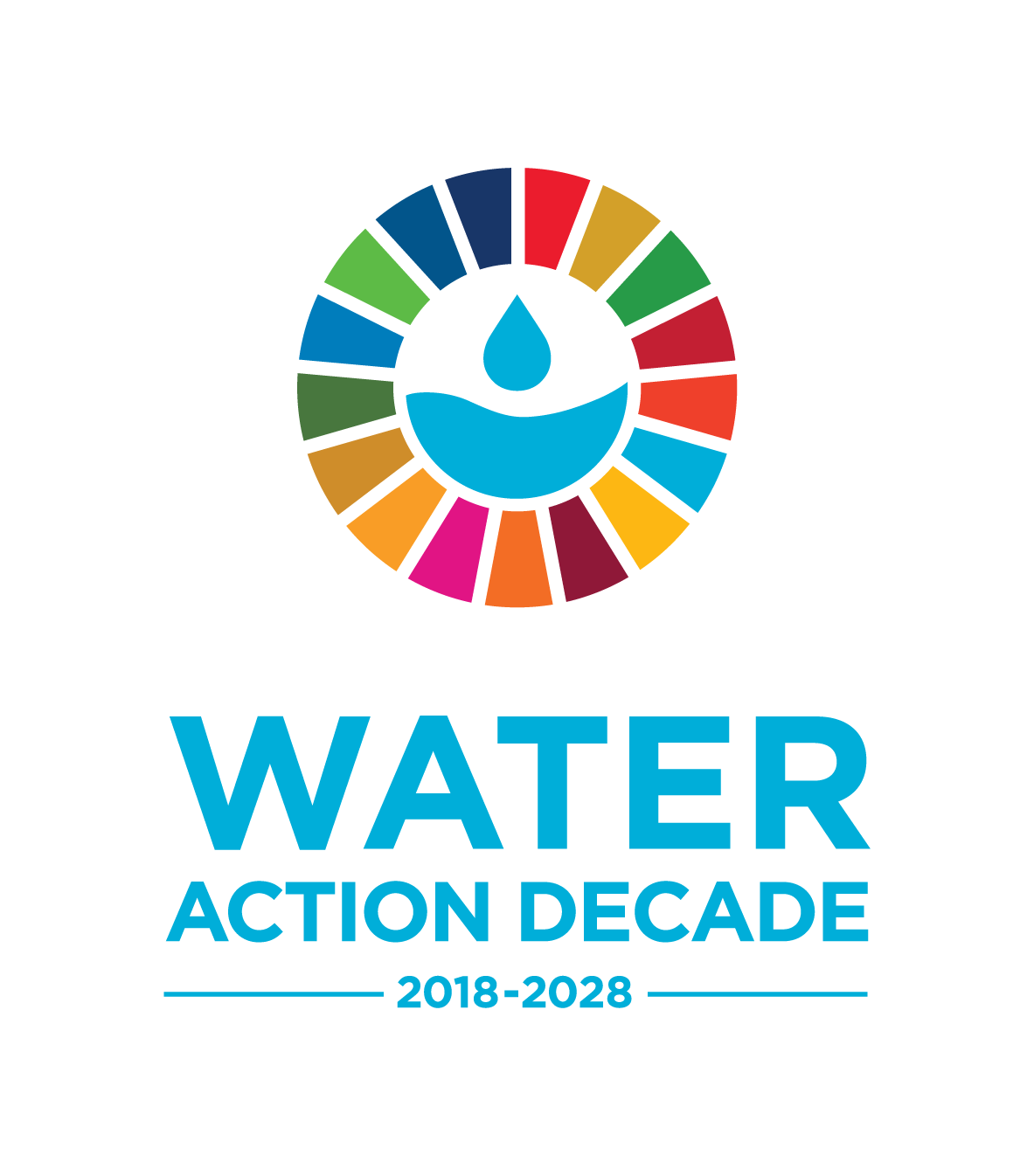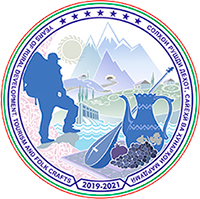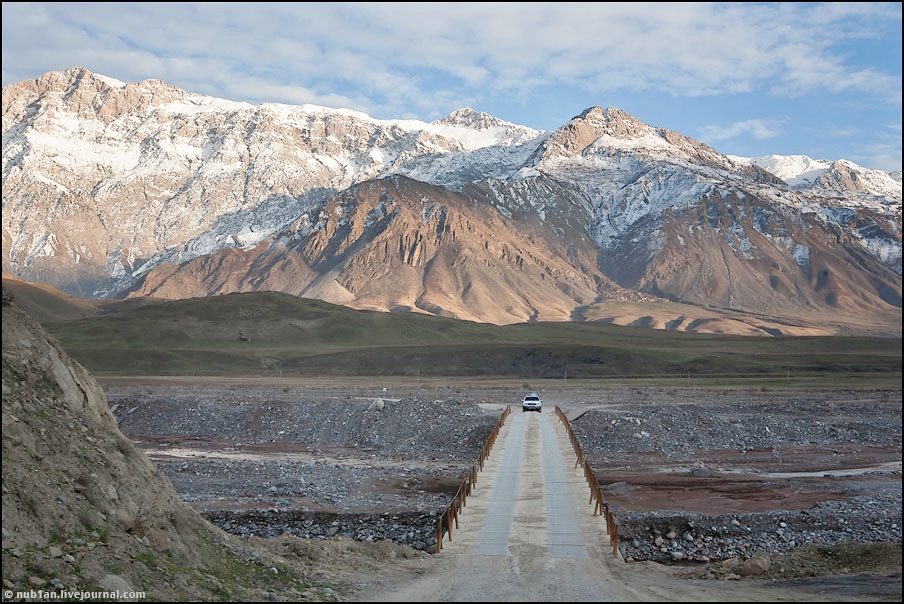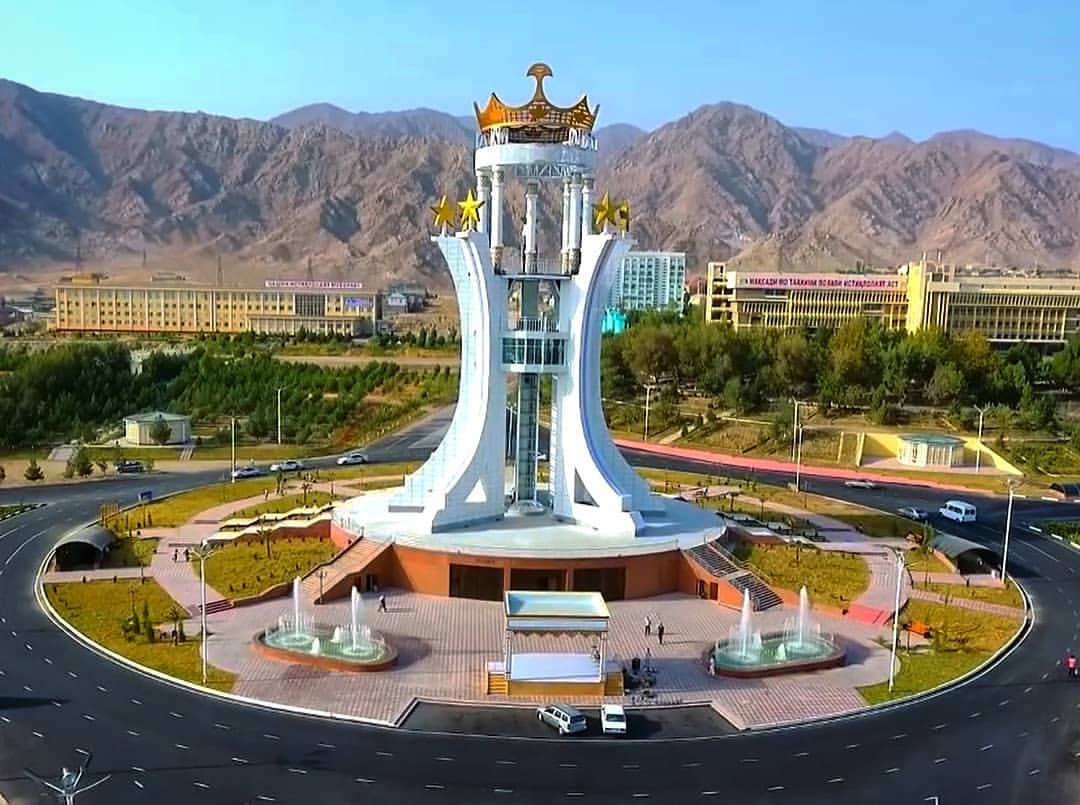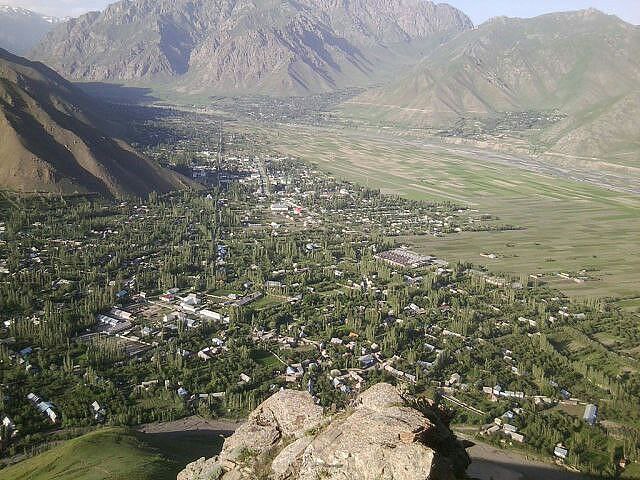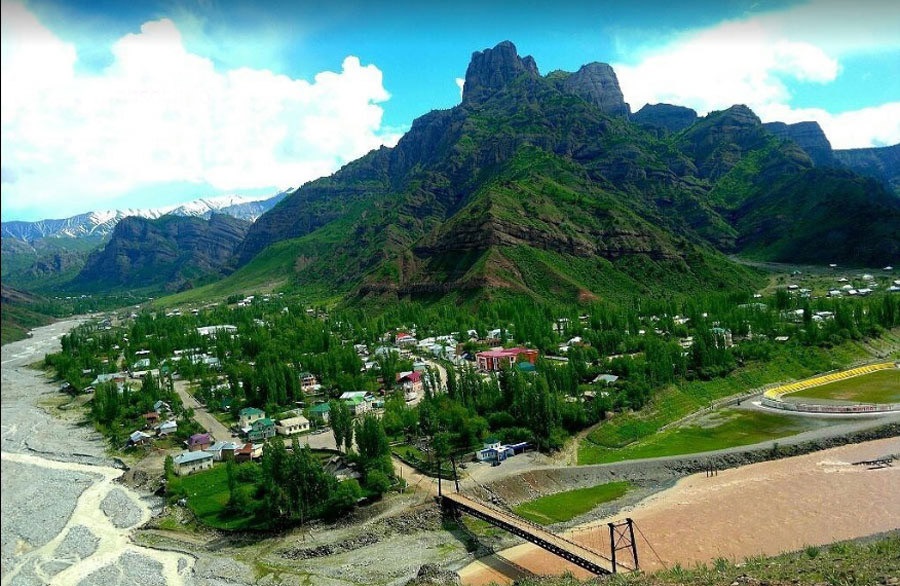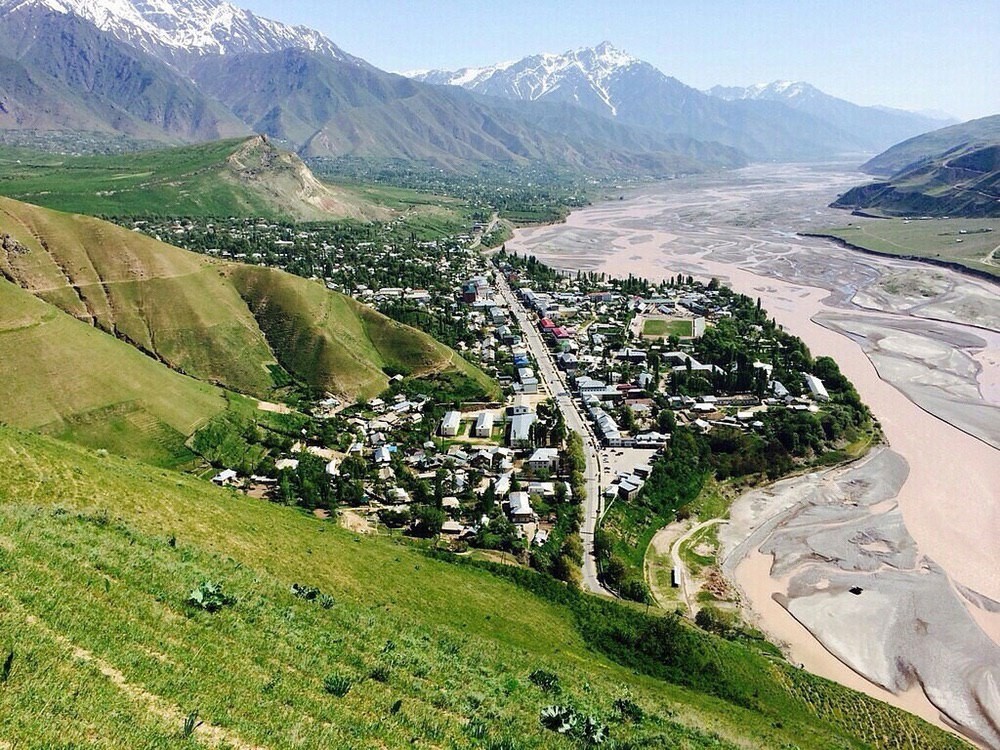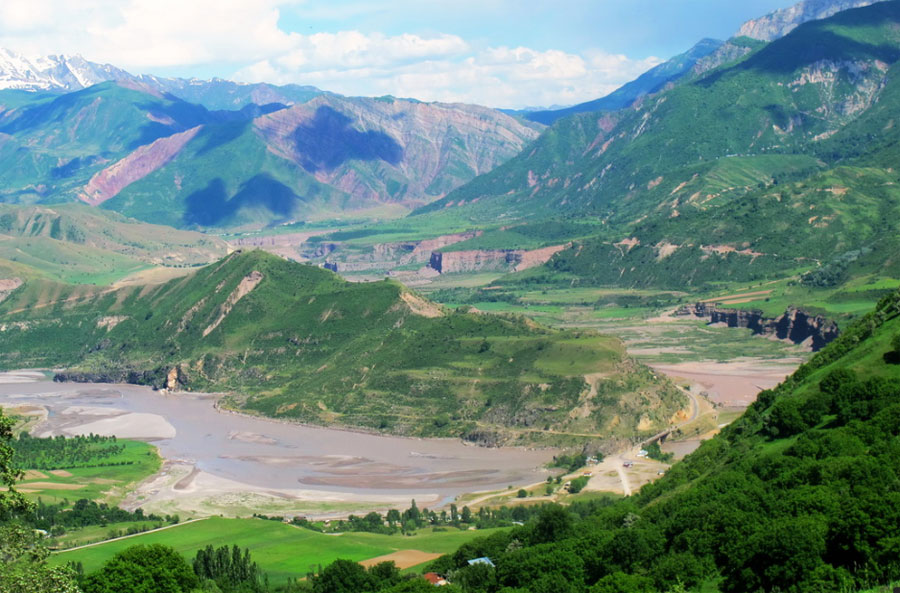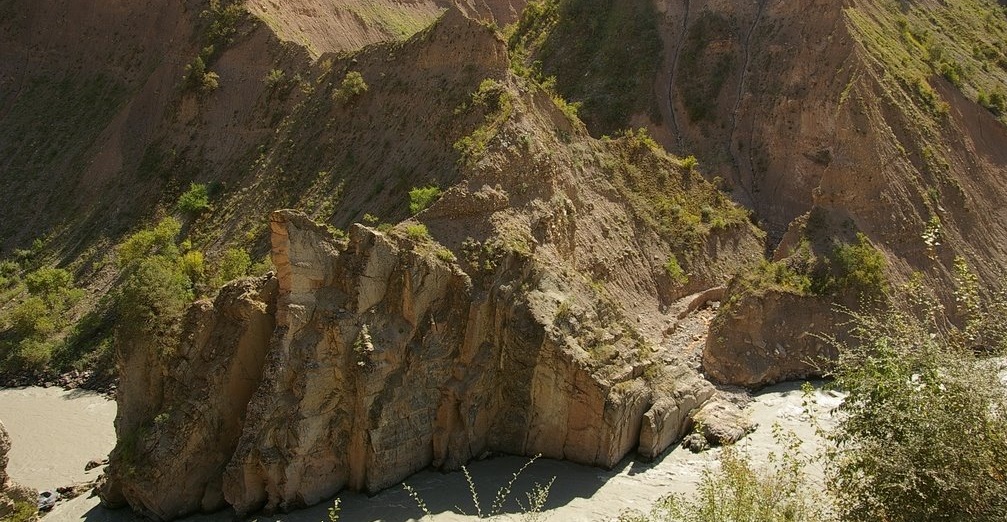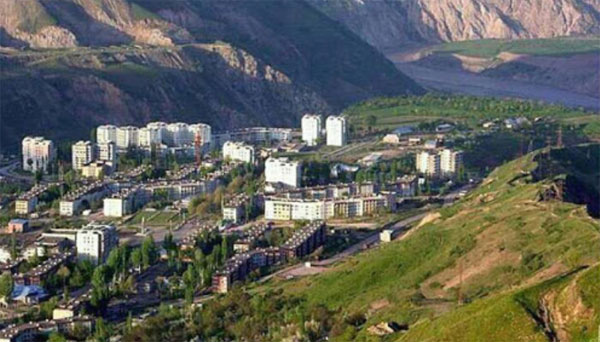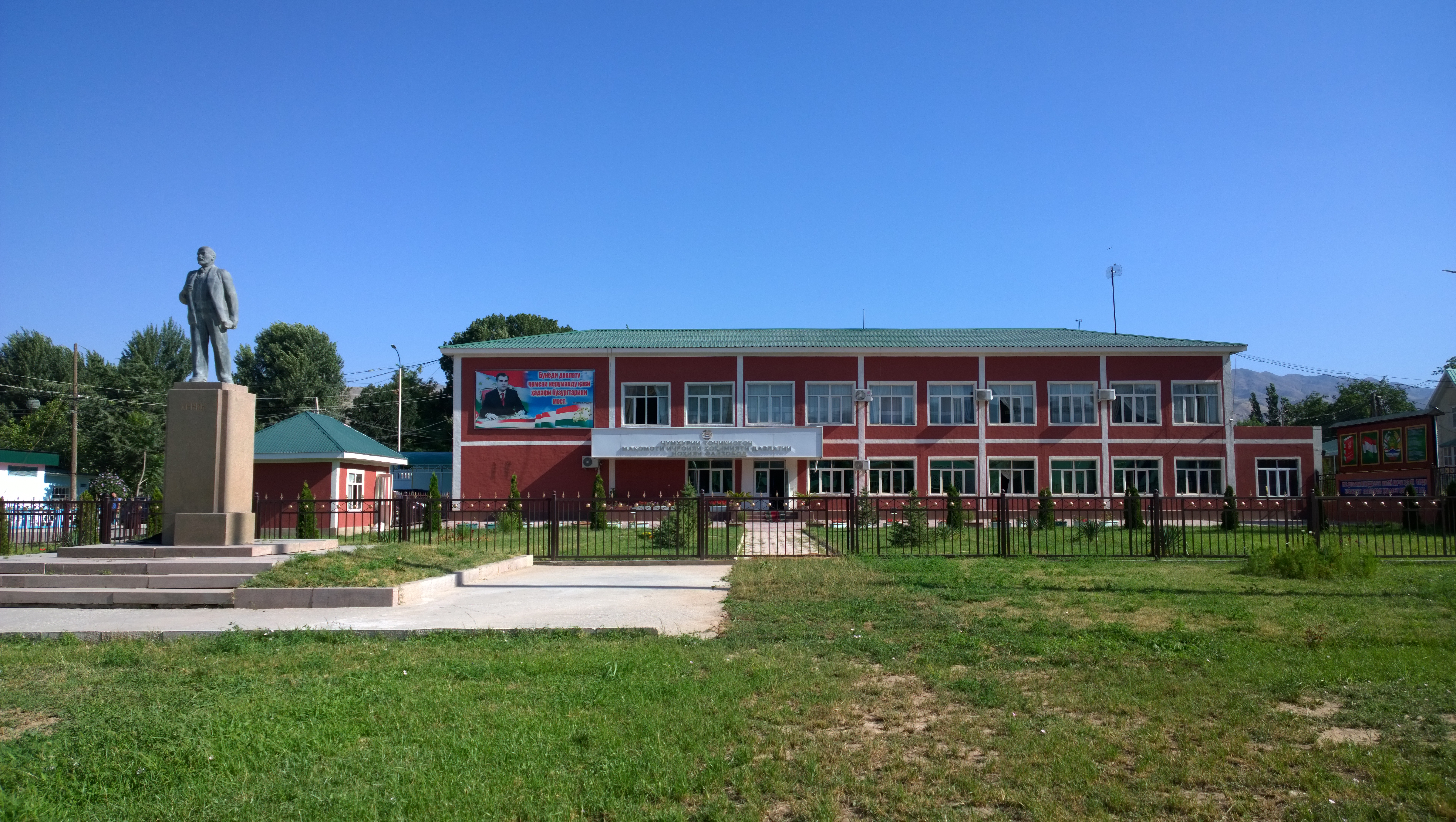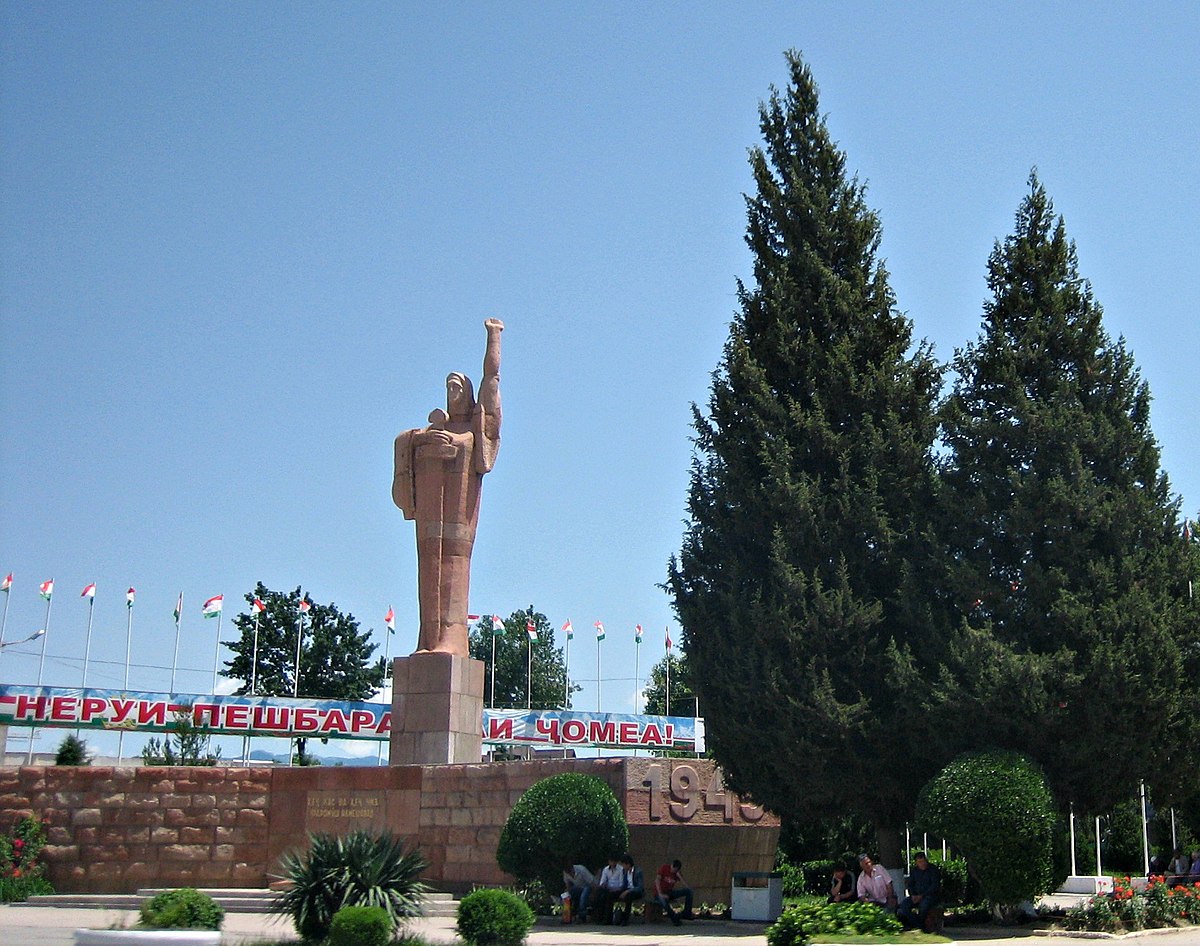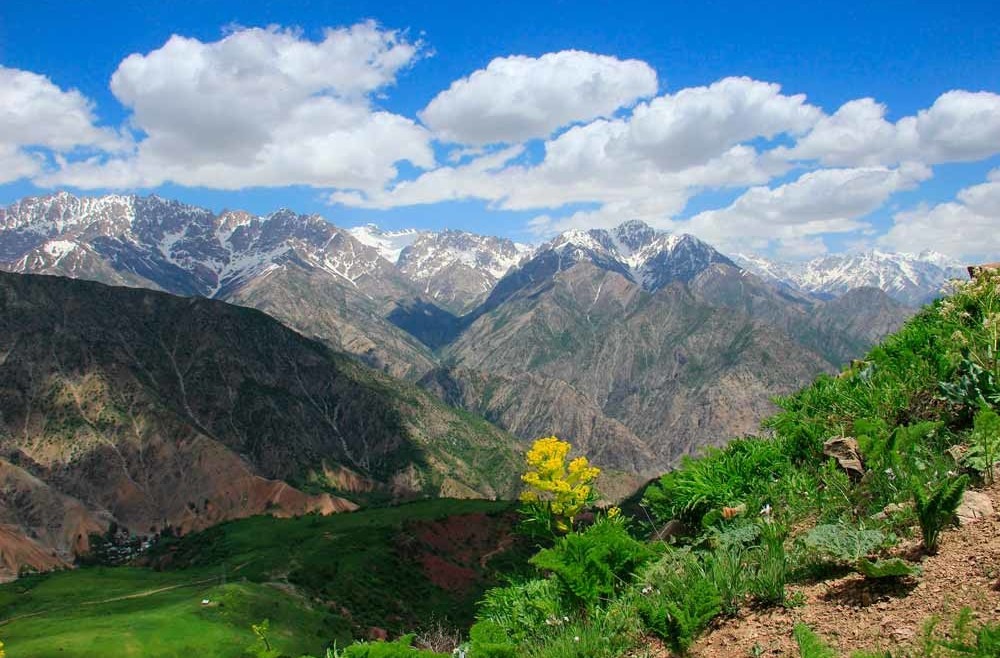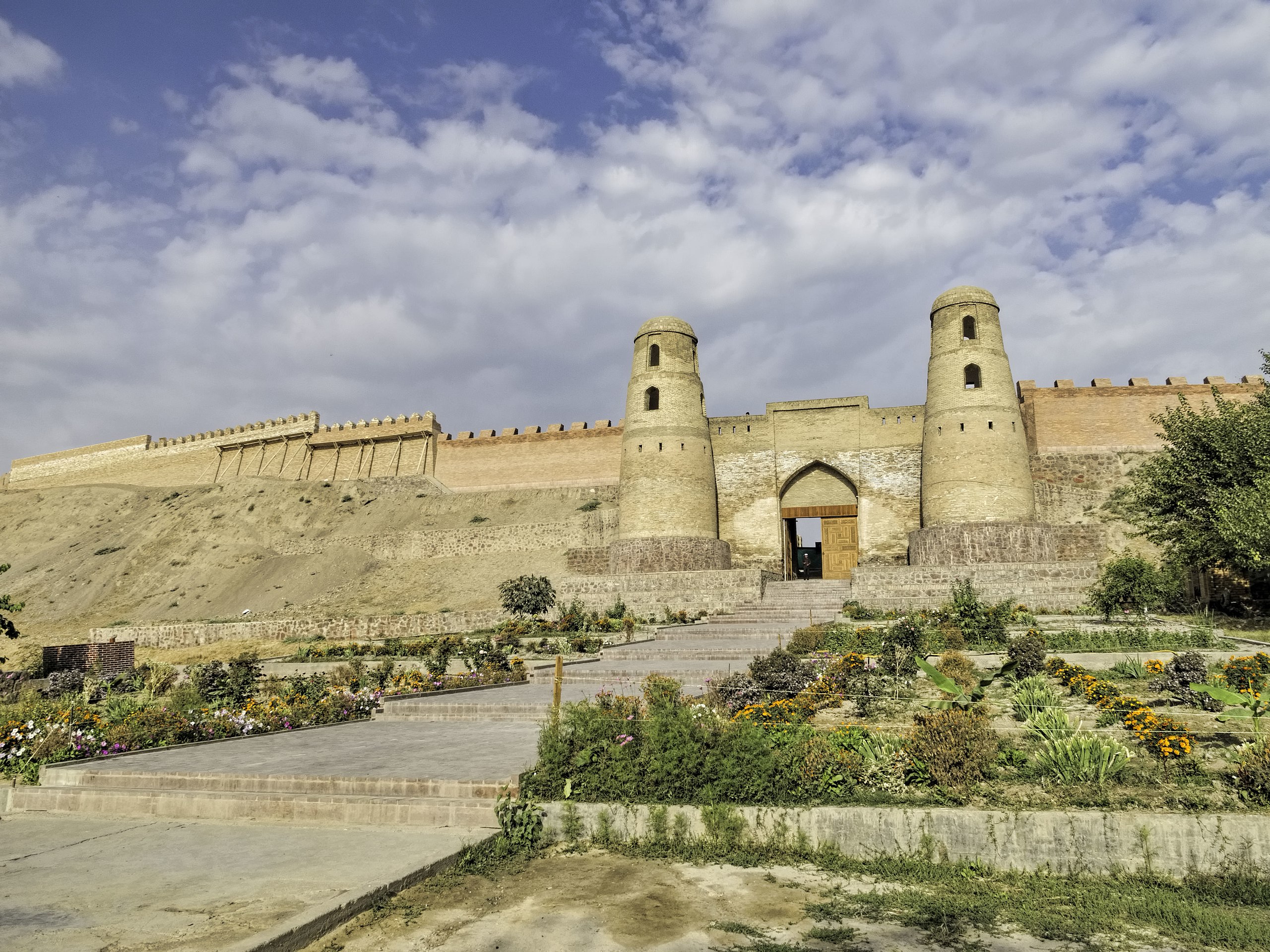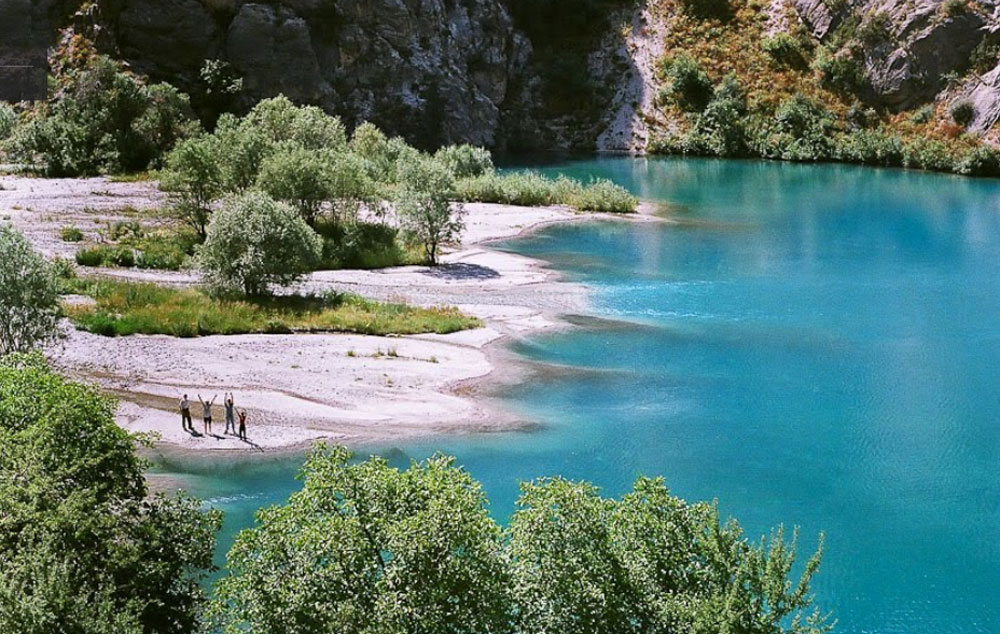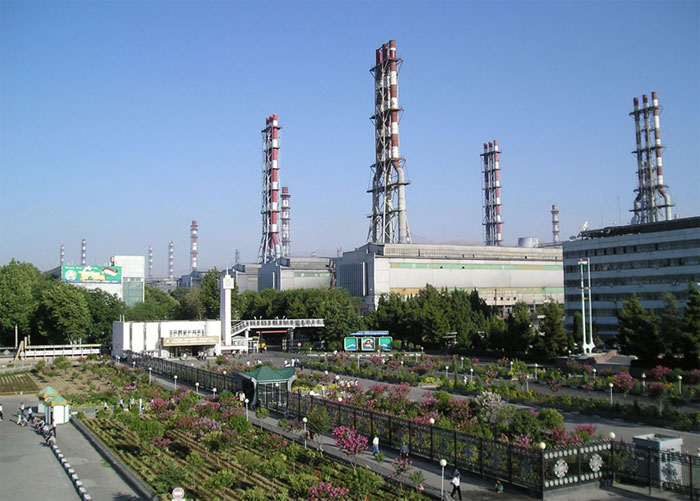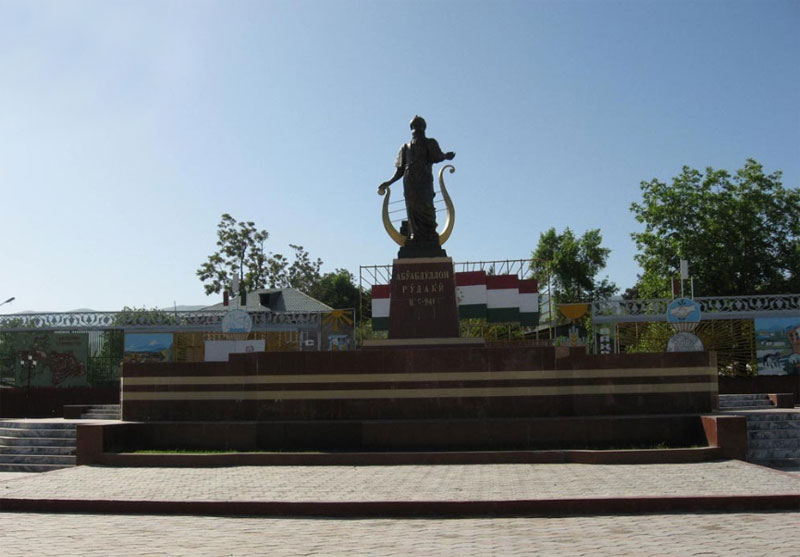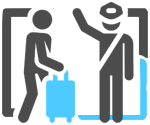Approved by
The Government Decree of the
Republic of Tajikistan
Dated 1 08 2018,
№ 372
DEVELOPMENT STRATEGY OF THE TOURISM IN THE REPUBLIC
OF TAJIKISTAN FOR THE PERIOD TILL 2030
CHAPTER1. GENERAL PROVISIONS
1. The tourism industry in the modern world is one of the profitable sectors of the economy and plays an important role in employment and improving the standards of living of the population. Therefore, the regulation of favorable conditions for the development of the tourist industry and the improvement of the state policy on the management of the industry are considered as the most important priorities of the social and economic development policy of the Republic of Tajikistan.
2. The strategy for the development of tourism in the Republic of Tajikistan for the period till 2030 (hereinafter referred to as the strategy) determines the goals, objectives and priority directions for the development of the tourism industry in the country for the period up to 2030 and is a factor in forming of plans and guidelines for business initiatives of citizens in the tourism industry of the country. The analysis shows that as a result of the measures taken, country visit by foreign tourists increase every year. Along with this, it should be noted that the tourist resources of the republic are not used properly and in accordance with modern international tourist standards, and as well as favorable conditions for tourists are not created. Therefore, the goal consists in continuing reform in this area and significantly to increase the contribution of the tourism industry to the socio-economic development of the country.
3. In this strategy, the existence of a rich historical and cultural heritage of Tajikistan, its unique nature with lakes, rare animals and plants, as well as high mountain peaks are recognized as the main factors for the development of tourism of the country. For the development of this industry, the necessary regulatory and legal framework has been created and a number of incentive measures have been implemented in the country. In particular, several international tourist zones have been created and presented to the general public, hotels and shopping centers have been built that meet modern requirements.
CHAPTER 2. THE CURRENT STATE OF THE TOURIST SECTOR IN THE REPUBLIC OF TAJIKISTAN
4. In the Republic of Tajikistan, the legal regulation of the tourism industry is carried out by the Constitution of the Republic of Tajikistan, normative legal acts, including the laws of the Republic of Tajikistan “On tourism”, “On domestic tourism”, the Tourism Development Program in the Republic of Tajikistan for 2018-2020, the Tourism Development Concept in the Republic of Tajikistan for 2009–2019 and other industry development programs.
5. The Government of the Republic of Tajikistan pays special attention to the development of tourism, using historical and cultural tourist opportunities, high mountains, clean, clear and healing waters and unique nature to attract more tourists.
6. Currently, Tajikistan’s contribution to the global tourism industry is insufficient. In 2017, the Republic of Tajikistan was visited by 430,992 tourists, that in comparison to 2016, by 86,019 tourists or 25.3 percent more.
7. After gaining independence, Tajikistan inherited the underdeveloped system of the tourism industry, which did not meet the requirements of a market economy. Along with the existing factors contributing to the development of tourism, in the regions of the republic there are a number of other problems that hinder the development of the tourist industry. Addressing these problems and improving the investment climate, attracting investment in tourism infrastructure, increasing the level of service, searching for new world markets and attracting more tourists will give a serious impetus to economic growth and the well-being of the population.
8. In order to find solutions to existing problems in the tourism industry, international experience shows that to attract investment in the tourism sector, the government first of all needs to identify its priorities and highlight benefits. It is also important that at the first stage the state should encourage the private sector to invest and provide the necessary economic and legal basis for the improvement of tourist areas. After a certain period of time (3-5 years), they will become a significant source of foreign exchange earnings.
9. The Government of the Republic of Tajikistan has already offered important tax and customs benefits for the development of the tourism industry. In particular, travel companies are exempt from income tax during the first five years of their activities, and imports of equipment, mashinery and building materials for the construction of tourist facilities are exempt from value added tax and customs duties. The import duty for new cars was also reduced by 50 percent.
10. In accordance with the Decree of the Government of the Republic of Tajikistan of April 12, 2018, No. 189, the List of Tourist Facilities, for the construction of which the import of equipment, machinery and building materials, is exempt from value-added tax and customs duties, has been approved. This list includes the following tourist facilities:
| № | List of objects |
| 1. | Hotels, including special hotels (small guesthouses, hostels) |
| 2. | Medical sanatoriums, holiday homes, resorts |
| 3. | Integrated tourism service centers (tourist complex) |
| 4. | Roadside service centers (motels) |
| 5. | Cultural and entertainment parks |
| 6. | Cultural, historical and religious zones (museums, shrines, historical sites) |
| 7. | Fishing and hunting infrastructure for tourist purposes |
| 8. | Restaurants with international brand |
| 9. | Centers for the production of handicrafts |
| 10. | Special adaptation bases for high mountain areas for tourists |
| 11. | Ski and tourist complex |
| 12. | Training centers for mountaineering, skiing, guided tours |
11. In accordance with this Decree and the approved list, the list and quantity of equipment, machinary and imported building materials are submitted in the prescribed manner in consultation with the authorized state body in the field of tourism and approved by the Government of the Republic of Tajikistan. After the adoption of this resolution, a complete and specific mechanism for the implementation of tax and customs benefits for the creation of tourism infrastructure was determined.
12. At the same time, in the Republic of Tajikistan, the experience of Turkish Antalya and Kyrgyz Issyk-Kul should also be widely used to select a tourist “introductory map”, taking into account the sale of such tourist products to the market. In this regard, the cities of Nurek and Penjikent, the Gorno-Badakhshan Autonomous Region can be chosen as the “introductory map” of Tajikistan. Also for the development of ecological and hunting tourism, the newly established nature reserve “Khutalon” in the Dangara district and the development of industrial tourism on the basis of the free economic zone “Dangara” are proposed.
13. If the priority direction of the tourism industry is chosen incorrectly, the development of tourism will not bring the proper result. The priority areas of the tourism industry for Tajikistan are ecological tourism, medical and health tourism, recreational, historical and cultural tourism, mountaineering and hunting. For the development of the above types of tourism, there are great resources in the republic. Since such high mountain peaks, including the Somoni peak with a height of 7495 meters above sea level and mountain landscapes, where you can see four seasons, clean, clear and healing waters, sanatorium and resort facilities, historical and cultural attractions that in the Central Asian region exist only in the Republic Tajikistan. That is, from an economic point of view, by offering such service packages, the tourism market in Tajikistan can offer tourists a product where there is no competition. It is only necessary to offer such services with high quality and affordable prices for tourists.
14. With the implementation of the wise and consistent “open-door policy” of the leadership and the Government, Tajikistan became a full member of the World Tourism Organization and a good foundation has been laid for the integration of the country’s tourism industry into the world market.
15. The Republic of Tajikistan, as a full member of the World Tourism Organization, has signed agreements on cooperation in the field of tourism with a number of countries of the world.
16. Tajikistan has introduced a simplified system for obtaining visas for citizens of 110 countries of the world,a n electronic system for obtaining visas and a unified electronic network.
17. In this regard, the world community’s attention to the country’s tourism resources has increased and the country’s image has strengthened as a peaceful and stable country with a rich tourism potential.
18. At the same time, the introduction of an electronic visa system and a visa-free regime with 12 countries of the world, the activities of more than 100 travel companies, the construction and reconstruction of a number of tourist facilities, create a favorable basis for the country’s entry into the world tourist market and attracting more tourists.
19. The operation of 4 international airports, 2 national airlines, 3 five-star hotels with an international brand, more than 70 resort and sanatorium facilities and more than 160 hotels, a number of tourist information centers contributed to the development of industry infrastructure.
20. The inclusion of the country in the top 10 most attractive countries for visiting tourists, the inclusion of the Pamir highway into the top ten mountain roads, the recognison of the capital of our Motherland, Dushanbe, in the top ten safest cities for night walks, the inclusion of Tajikistan among ten best countries in hiking and adventure tourism. as well as the entry of the republic into the list of five advanced countries of the world from the point of view of a simplified system for obtaining a visa demonstrate the recognition of the country’s tourism industry in the international arena and make every citizen of Tajikistan honored.
21. It should be noted that the tourism industry creates new jobs, as providing hospitality is a labor-intensive job. This is primarily the creation of new jobs for the local population. Such new jobs are created in all spheres of work, from the executive director of the hotel chain to the hotel’s attendants, the crew of the aviation company to the guide on mountain tourism.
22. Also, the tourism opportunities of this industry transform it into one of the best industries for starting a business. The demand for investment in the tourism industry is not too high, but the sector’s opportunities are very wide. Each initiator can start his activities in the field of tourism. Creating new jobs in the regions is often the only way to eliminate the problem of leaving young people their permanent residence in order to find work abroad.
23. Tourism development depends on natural and ecological conditions, including national culture, customs, national dishes and beverages, history and cultural heritage and is an important basis of the tourism industry. Therefore, the development of the tourism industry should assist in ensuring that from generation to generation together be active in protecting nature and the environment, cultural heritage, national traditions and crafts.
24. The trade base of the tourism industry is consistent with economic, social and environmental priorities and therefore this industry is one of the best industries to ensure a real balance of environmental, social and economic stability. Tourism is the face of the country. People outside the country will first of all learn about the country’s tourism opportunities by its image, based on a discussion of tourist attractions with tourists who have visited the country. The Republic of Tajikistan has wide ranges of opportunities to present itself to the world community and leave good impressions for tourists.
25. At present, in the Western world, there is not enough information about Tajikistan as a tourist country and the information that people have is not always reliable. Tourists expect safety, hospitality and high satisfaction from their trip. Reaching a level when such demands are met means that the state has achieved high fame in the world. This creates an effective chain, which not only contributes to the development of tourism, but also the development of international economic relations, including the attraction of foreign investment.
26. The tourism industry is a window to the world, also serves as a mirror of the country. Tourism covers information about the country – about its nature, culture, history and cultural heritage, national dishes and drinks, folk traditions and customs.
27. The development of the tourism industry and the interests of foreigners will simultaneously increase the interest of the local population to various positive aspects of the attractive landscape of the country. This, in turn, creates a new sense of pride for a country or a region, through the recognition of its great values and contributes to the development of domestic tourism and an increase in the number of local tourists.
28. Traveling through the territory of their homeland, the people of Tajikistan will study and appreciate it more. In most countries, the number of domestic tourists exceeds the number of foreign tourists. This creates the conditions for doing business in the tourism industry and acts as a means of raising the level of education of the population about their country, its recognition and increasing a sense of national pride.
29. Thus, the development of the tourism industry as a whole can significantly affect the socio-economic development of the country, the creation of new jobs, promote the growth of the country’s image in the international arena, increase self-awareness, national pride, as well as economic stability and investment.
CHAPTER 3. CURRENT STATUS AND GOALS OF THE DEVELOPMENT OF THE TOURISM INDUSTRY
§ 1. Tourism industry of Tajikistan in 2030
(forecast, goals and objectives)
30. In 2030, the Republic of Tajikistan will become a country with sustainable tourism and recognized in the region and in the international arena. The contribution of tourism to gross domestic product is significant, and tourism, as the main engine, plays an important role in creating jobs in cities and remote regions of the country. Attraction of foreign and domestic investment, special tax and customs privileges, are aimed at the development of roadside infrastructure, hotels, resorts and tourist complexes, as well as conditions and transport and logistics infrastructure are in place for the formation and development of folk crafts, industrial and tourist entrepreneurship in rural and remote areas of the country, which have a unique climate. Labour migration is declining and the new jobs created provide for the formation of the middle class of the population in the villages.
31. Over the past 10 years of development of the tourism industry, our Republic has turned from a country of adventure, ecological and pedestrian tourism into a country of historical, cultural, recreational, industrial, commercial and business tourism. The level and quality of services meet international standards.
32. The position of the Republic of Tajikistan in the rating of hospitable countries (World Economic Forum), the index of safe countries (Institute of Economy and Peace), the world tourism and travel Council (World Tourism and Travel Council) is located in prominent places, and the marketing organization (Destination Marketing Organization) is engaged in inclusive activities to promote the national brand of tourist areas of Tajikistan.
33. An international University has been created for tourism and hospitality of Tajikistan, which employs specialists in the field of tourism. Special magazines, television programmes and newspapers on tourism have also been created. Tourist service centres have been set up in all cities and districts, as well as promotional and advertising materials in a foreign language, and interesting and illustrated brochures and discs have been distributed free of charge throughout the country and abroad.
34. The main objective of the strategy of tourism development in the Republic of Tajikistan for the period up to 2030 is to ensure sustainable development of tourism in the country. To achieve this main objective, the following strategic objectives have been identified:
-formation of the institutional framework for the development of the tourism industry;
-formation of a modern tourist infrastructure;
– strengthening the tourism potential of the Republic of Tajikistan and proper organization of its comprehensive promotion;
– ensuring the competitiveness of tourism products by improving the quality of service;
-formation and presentation of the national brand of tourist areas-marketing and promotion of tourism products, protection, development and rational use of natural and recreational resources and historical and cultural heritage;
– strengthening human resources, staffing and productive employment in the tourism industry;
-compliance with international standards and ensuring the safety of tourists;
-creation and development of tourism clusters and provision of innovations and investments for the development of the tourist industry;
35. To achieve the strategic goals, the following main measures will be envisaged:
Towards the formation of the institutional framework for the development of the tourism industry:
– improvement of the current legislation and regulations governing the tourism industry;
– development of an additional act of the tourism industry;
– implementation of international standards in the field of tourism;
– strengthening the institutional bases for public partnership and the private sector in tourism.
In terms of the formation of modern infrastructure of the tourism industry:
– promotion of tourism infrastructure development, creation of a single window, as well as an automated tourist registration system (E-guest system);
– modernization of tourist reception points, including important local and international airports, border crossings and transport terminals;
– development of road transport infrastructure, including modern roadside facilities for sanitary and technical services, signs and symbols in Tajik, Russian and English;
– development of the infrastructure base of tourism, covering sports and recreation complexes, recreation and entertainment;
the infrastructural development of mountain and eco-tourism;
– development of modern network infrastructure of hotels, restaurants, museums and libraries, theatre and cinema institutions in accordance with national elements;
– development of information and communication infrastructure and financial services.
In terms of strengthening the tourism potential of the Republic of Tajikistan and the proper organization of its comprehensive promotion;
– conducting research to determine the tourism potential of the Republic of Tajikistan;
– strengthening the tourism potential of tourist sites and regions;
– integrated use of tourism potential through the creation of special tourist regions and the definition of development points;
– presentation of tourism potential.
In terms of ensuring the competitiveness of tourism products based on improving the quality of service:
– ensuring the competitiveness of tourism services by improving their quality;
– diversification and expansion of tourism services;
– expansion of e-tourism services in online applications (visa, hotel, restaurant, transport);
– development of a transparent system for assessing the quality of services, their classification and determination of their level and status;
– the creation of a culture of pricing on travel services.
In terms of the formation and presentation of the national brand of tourist areas, marketing and promotion of tourism products, protection, development and rational use of natural and recreational resources, as well as historical and cultural heritage:
– formation of the national tourism brand and presentation of the national brand of tourist areas and facilities;
– presentation of the national brand using marketing communication tools, including propaganda (hereinafter-PR) – advertising, audio-visual and printed materials;
– organization of promotion of the tourist brand using the media, the world wide web, social networks and its presentation in various national, regional and international events;
– improving the efficiency of the use of natural and recreational resources;
– development of the list of natural and recreational resources, protection of biological diversity;
– environmental protection and environmental safety;
– development and restoration of historical and cultural heritage sites representing history and culture;
– classification of historical and cultural heritage related to history and culture.
In terms of human potential, staffing and productive employment in the tourism industry:
– creation of favorable conditions for the development of human potential, training and retraining of personnel to ensure active employment in the tourism industry;
– provision of personnel for the tourism industry of the country, organization and conduct of retraining courses for management personnel and service personnel;
– ensuring coordination of the state bodies of the tourism industry with professional educational institutions and the tourist market (labor) of the country;
– considering the establishment of the International Academy of Tourism and the Silk Road Research Institute to train highly qualified specialists and scientific personnel in the tourism industry;
– organization of study of foreign experience, professional development and training of personnel abroad;
– assessment of the level of qualification, professional skills, history, culture, national art, foreign languages and modern technologies;
– permanent employment and creation of new jobs in the tourism sector.
In terms of compliance with international standards and ensuring the safety of tourists:
– formation of criteria of national standards of tourism in accordance with international standards;
– cooperation with international organizations in terms of compliance of the country’s tourism products with international standards;
– monitoring compliance with international standards in the organization and promotion of tourism activities;
– taking measures to ensure the safety of tourists;
– protection of rights and organization of insurance of tourists.
In terms of creating tourism clusters and ensuring innovative and investment development of the tourism industry:
– organization of tourist clusters on the alpine-skiing, recreational, cultural and historical areas for the silk road;
– creation of tourism clusters (entrepreneurship) for international meetings, forums, symposia and conferences;
– creation of tourist clusters of events (events and celebrations) for international competitions in national sports and national holidays, creative festivals, competitions, exhibitions, as well as international sports competitions;
– creation of special thematic clusters of tourism;
– innovative support for the development of the tourism industry;
– improving the investment climate of the tourism industry;
– attraction of foreign and domestic investments for the development of the tourism industry;
– offering and implementation of benefits and state guarantees to protect the interests of investors.
§2. Tourism in the world economy. Bases of development and competitive priorities for the tourism industry of Tajikistan
36. The tourism industry plays an important role in solving social and economic problems, providing employment and improving the welfare of the people, also contributes to the development of the national economy. Experience shows that tourism has been developing rapidly for decades despite the economic and financial crisis, political changes and social changes. For example, world tourism statistics show that:
– the number of tourists in the world increased from 698 million in 2000 to 1 billion 322 million in 2017.
– revenues from the tourism industry increased from 478 million USD in 2000 to 2.2 trillion USD in 2017.
– the share of tourism in the gross world product increased from 6 per cent in 2000 to 11 per cent in 2017.
– tourism accounts for 7 per cent of world exports and 30 per cent of world tourism services.
37. If in 2011 the tourism industry invested 800 billion USD, which is 4.9 percent of the total investment in the world, according to experts, this figure for the year increased by 5.6 percent, and by 2022 will reach 1.3 trillion USD.
38. It should be noted that the development of the tourism industry contributes to the creation of new direct and indirect jobs. Employment in the tourism industry of the world is 277 million jobs, which by 2022 will reach 350 million people, occupying a special and strong position.
39. In 2017, about 1.2 billion international tourist trips were made around the world, and according to experts, this figure will reach 1.4 billion by 2022 and 1.8 billion tourist trips by 2030.
40. In this regard, the annual growth of the economy of developed countries is 2.2 per cent, and in developing countries – 2 times more, i.e. 4.4 per cent. This means that by 2020 the number of tourists in developing countries will increase compared to developed countries. At the same time, it should be noted that foreign travel in 2017 increased, as it was provided not by 4.4 percent, but by 7.2 percent.
41. If you look at the statistics of the tourism industry in some countries, for example, from the tourism industry in 2016, the US made a profit of 206 billion us dollars; Spain – 60 billion us dollars; Thailand – 50 billion us dollars; the people’s Republic of China – 44 billion us dollars; France – 42 billion US dollars.
42. At the same time, China has spent on the development of tourism – 261 billion US dollars; US – 124 billion US dollars; Germany – 81 billion USD; United Kingdom – 64 billion US dollars and France 40 billion U.S. dollars. That is, tourists of these countries spend such money in other countries.
43. As already mentioned, the development of the tourism industry can bring significant profits to the national economy. In addition to the real scale of income from tourism, the industry also has other advantages, including:
– most of the income is acquired in foreign currency, which helps to maintain a stable balance of payments of the state;
– most of the expenses of this industry are directly related to income. From each dollar spent in the tourism industry, of which 70 cents is a net profit. This is higher than the profitability of the automotive, communications, chemical and mining industries;
– every dollar spent on the tourism industry (e.g. hotels) produces $ 3 from tourism-related industries (e.g. hotel service providers, hotel construction companies);
– on average, 91 cents of every dollar spent in the tourism industry remains in the national economy;
– tourism is often the main means of supporting regions, especially mountainous and remote areas, which have no other economic advantages, which is a key source of improving living standards in rural areas;
– the direct influence of the tourism industry, such as the demand for local products or local professionals , can help to create a real basis for the development of other industries.
CHAPTER 4. THE STAGES OF STRATEGY IMPLEMENTATION
44. The strategy will be implemented for the period up to 2030 through three medium-term periods (every 4 years), where the focus at these stages will be on priority areas of development of the tourism industry.
45. The stages of implementation of the strategy consist of the accelerated development stage (2019-2022), the stage of completion of the accelerated industrialization (2023-2026) and the stage of capacity building for development on the basis of knowledge and innovation (2027-2030) of the National development strategy of Tajikistan, based on attracting investments.
46. In these stages, as noted in the National development strategy, the transition from the diversification of economic growth through the intensification of agricultural production, the rise in the value chain in industry, the modernization of the social sphere, the accelerated development of the financial sector, tourism and business services are in the first place. In economic growth, the contribution of human capital to efficient and advanced technologies will increase.
CHAPTER 5. STRATEGIC DIRECTION OF THE DEVELOPMENT OF TOURISM IN TAJIKISTAN
§ 1. The importance of strategic directions
47. Taking into account the great benefits of the tourism industry, the government of the Republic of Tajikistan, along with other countries, also seeks to promote the development of this industry. Modern technological advances, including the development of information and communication technologies, have simplified and expanded access to an even larger number of tourist destinations.
48. With the increasing number and costs of international tourists, travel opportunities are increasingly expanding. These conditions turn the tourism industry into one of the most competitive sectors of the economy.
49. While Tajikistan has the most natural advantages, the success of the tourism industry, along with measures to facilitate access to a large number of countries in the world and the establishment of a legal framework for the tourism industry, also requires consideration of other factors. To achieve success it is necessary to provide full management, regular innovation, the common objective of the private and public sectors and the desire to fight in the conditions of tough competition.
50. Effective management of enabling factors is an important task and means the growth of real opportunities in the long term.
§ 2. Customers journey
51. Taking into account the competitiveness of the tourism industry and the wide range of potential tourists, it is important to take into account the point of view of potential customers. The easiest and most sustainable way to succeed is to better meet the needs of tourists than other countries, including those in the region.
52. Passengers and tourists regardless of their purpose might think about traveling. When a citizen travels on holiday or on a business trip, the journey must cover all types of short-term visits. Tourists and passengers, firstly, do not think about planes or hotel rooms or even about the unique nature and unique buildings. They reflect the overall impression. They present their journey as a whole and as a rewarding and enjoyable experience. Often, buying tickets and booking hotels are not the main goal. This is just a tourist component, which is usually associated with the trip as a whole, for example, with a satisfactory start. In this process, it is necessary to move from different stages, such as tourist countries for tourism, business trips, departure, stay, return home, dissemination of information about the impression of the trip and maintaining contacts.
53. Travel companies need to collect information about their customers, i.e. tourists, by keeping in touch with them via email or social networks to keep a realistic and “live” experience for tourists in their thoughts and encourage them to follow-up visits or attract other tourists. Since the second tourist trip to one country is always the best indicator of the development of tourism in the country.
§3. Marketing
54. Marketing is an important aspect of the strategy, which consists of market research, promotion, promoting sales and communication with customers. Before starting marketing activities, it should be determined to whom it is directed, and who is the main goal. Marketing begins with market research.
55. Market research can be complex and expensive or relatively simple. The more funds are raised, the better the quality, but the research process is usually the same. The market research process includes the following steps:
– identification of possible markets;
– scale and capacity assessment;
– determination of the client’s interest;
– adaptation to their own products.
56. For the tourism industry, as a rule, extensive market research begins with visiting tourists and will be continued in the main sales markets.
57. There is no need to abandon any market and ensure that the situation is carefully monitored. But at the beginning of work in the tourism industry in Tajikistan, it is important to focus on attracting more tourists from the Commonwealth of Independent States and Western Europe. In particular, attention should be paid to markets with easy access to Tajikistan and relatively high incomes, such as Germany, Benelux Countries, including France, Switzerland and the United Kingdom.
58. The first step is to conduct customer inquiries in the tourism market to obtain information about the opinions and information about the different socio-economic groups in Tajikistan as places of recreation and tourism. This can contribute to the formation of the original media. Promotion and marketing in travel products is the most convenient and easy way and should be strictly controlled. This contributes to the “live” market research.
59. Naturally, the desired result is not achieved quickly. Existing resources and the current level of routes will only lead to market research results, such as primitive propaganda based on information evaluation and customer feedback. Thereafter, relatively broad and complex market research based on initial experience and on a regular basis should be planned.
60. Effective measures: conduct a survey of tourists from Western Europe, which are target markets for Tajikistan with easy access to the country (at the current stage, the territory covering the airports of Frankfurt and Dubai).
§4. Advertising
61. At the stage of ” Inspection ” of tourism customers the main task is to constantly focus the attention of potential tourists through the media, websites and social networks. Travel companies use television, movies, radio, the press, websites, Internet networks, promotional tools, public relations (PR), events and other means of communication to advertise.
62. Depending on the idea of propaganda, the decision should be made in two directions: branding and basket (portfolio) of products. The brand (image) is developed on the basis of a basket of products of the Republic, in a short and attractive form. The brand of the country should be different from the brand of other countries and include national tourism priorities.
63. Tajikistan is the owner of the most innovative and original value, and the Internet provides a wide range of opportunities for all, even with limited resources. The use of best marketing practices is crucial in brand development.
64. A good national brand covers information in a short and attractive way.
65. Effective measures: measures to determine the tourism brand of Tajikistan to attract current and potential tourists.
66. From the very beginning, the tourist brand of Tajikistan can be defined with the participation of the local population and foreigners. The brand can be changed by introducing new information from real and potential tourists, which contributes to the proper development of the country. The constituent elements of the brand determine the peculiarity and ways of its advertising.
67. The brand needs to be given such a look that it remains in the hearts of potential tourists. This requires the professional help of a marketing expert at.
68. A basket of tourist products is placed under the brand. If the brand in its essence means an emotional invitation, the basket of tourist products is considered to be a practical activity. This is a brief description of what potential tourists can relax in the country, what they can do and what to see. In fact, for the tourism industry Tajikistan needs to focus on the effective use of existing resources.
69. In General, the composition of the basket of tourist products of Tajikistan determines the content of advertising.
70. Effective measures: using the Internet as the primary means to complement public relations (PR), in particular by organizing study tours through foreign media.
71. The basis of these promotional initiatives should include an all-inclusive national tourism website. Today, the public and private sectors are working closely together to address this problem. The national tourism website is the focus of attention for the national tourism authority. The site guarantees equal opportunities for all travel companies in the country that meet the minimum requirements of quality standards.
72. The national tourism portal also provides links to foreign travel companies, airlines, hotels, other companies operating in Tajikistan and a wide range of social networks. For the National tourist portal of Tajikistan (www.traveltajikistan.tj).
73. Public relations (PR) is an important means of advertising. Based on its essence, it is a free way of disseminating information in the media, in particular, is represented by tourist journalists through magazines, television and the Internet. Today, the opinion of famous personalities and leaders is of great importance in social networks. Usually this method is not absolutely free as it is necessary to pay some celebrities, but usually it is a very cheap and relatively reliable way to pay for advertising.
74. At the same time, the risk is also high because the information management process is not possible. All other elements of the advertising campaign, access, product development and quality must be in good condition before receiving the opinions of famous people about Tajikistan, for example, through the implementation of the “study visit”.
75. It is advisable to consider and develop public relations (PR) at the national level through the authorized state body in the tourism industry with the involvement of private sector specialists.
76. Effective measures: primary marketing initiatives, including online promotion and public relations (PR) around a small sample of tourism products, should focus on one or two markets in Western Europe and in Arab countries with easy access to Tajikistan.
77. One of the effective ways to attract foreign tourists to the country is the participation of tourist companies in tourist exhibitions abroad. However, not all domestic companies have the opportunity to participate in such exhibitions. Since the cost of participation in most well-known exhibitions is very high.
78. Effective measures: assistance of the authorized state body in the tourism industry, embassies of Tajikistan in foreign countries for further participation of local tourist companies in tourist exhibitions and expansion of cooperation of tourist companies of the country with advanced tourist companies.
§ 5. Establishing sales
79. After attracting the attention of a potential tourist at the stage of” Inspection ” of tourism, it is important that the client is interested in the transition to the stage of “Order” of the trip. Because good first-time travel experiences can easily be lost due to the pressure of multiple options.
80. Again, the national website is the basis of this activity. The site should have links to foreign and domestic companies that can quickly and effectively promote sales incentives. Travel companies also need to have modern Internet sites to show availability and the ability to order. To do this, the private sector needs to be helped to have the necessary information technology (IT) equipment, as well as human and technical capacity for online advertising and sales.
81. Effective measures: there is a need to develop and implement a programme to provide and support travel companies to acquire the necessary information technology equipment and the ability to conduct business online.
§ 6. Maintaining contact with customers
82. Like any commercial activity, attracting customers or tourists remains one of the important tasks and is a very difficult part.
83. Keeping in touch with customers so that they can re-book a trip or recommend to their friends and colleagues is easier than often miss. Tourism organizations and companies should develop communication skills with customers, especially through e-mail and social networks.
§ 7. Access
84. Access is another aspect of the strategy consisting of transport, border, customer service, visa, licenses, permits and registration of tourists within the country.
85. In this regard, it is important to provide easy access with minimal costs to Tajikistan, as otherwise a tourist can choose another country to travel to.
§ 8. Transport, borders and study customer service areas
86. It should be noted that the level and quality of services at the international airports of the Republic and other border crossing points is one of the key factors in the development of tourism. Airports and other border checkpoints are objects that leave behind first impressions of Tajikistan and it is very important to promote positive impressions from these trips to tourists. In case of arrival of tourists, the service should be designed in such a way that foreign tourists feel good in an atmosphere of hospitality and courtesy. From the received positive memories the tourist can transfer it to others and then the number of potential tourists to our country will increase.
87. When accompanying guests, the service companies should be sure that the guests will return to their country with good impressions and try to make this impression even stronger. Because their story about Tajikistan is one of the best ways to advertise Tajikistan and attract more tourists.
88. Therefore, the quality of services in these areas should be at a high level. One of the main gates to enter Tajikistan is Dushanbe international airport. Of course, these efforts are not without results and it is obvious today on the situation of services provided at the airport. Nevertheless, the level of service at the airport and other border points should be raised and equated with international standards.
89. During the entry of tourists into the country through airports and other border points, they are controlled by several state bodies, including the Border troops of the State Committee of National Security and Customs Service under the Government of the Republic of Tajikistan. Although the situation in these sectors has improved in comparison with previous years, it is not limited to some professional shortcomings and more. These include: lack of knowledge of foreign languages (especially English) by employees of these institutions, in some cases, long waiting for tourists to leave the airport, get their Luggage and more.
90. Thus, according to the strategy at airports and other border points, tourists and other guests need to provide Tajik hospitality, which is provided to guests in homes, will eventually become an important achievement in the tourism industry and will attract a large number of tourists and their repeated visits.
91. Effective measure:
– organization of permanent courses for officials of bodies operating at airports and other border points
– introduction of a modern management system at all border points.
92. First impressions are very important. It is necessary to carry out entry and repatriation procedures at airports and other border crossing points with good and friendly procedures with tourists. Most people choose positive emotions and enter the country and then after the tour. And if during the departure from the country allowed rough attitude to the tourist, the last negative impressions can remain in their memories, and are common among friends and relatives.
93. Increasing the number of flights, tourists from different parts of the world will find a wide range of trips to Tajikistan. Analysis and world practice show that the introduction of the “open sky” policy in the country’s economy brings many advantages.
94. Effective measure:
– regular surveys on the entry and exit process at Dushanbe International airport, other international airports and border crossing points. Taking into account the results of such surveys, improve the process or procedures of entry and exit.
– taking into account the geographical location of Tajikistan, which is located in the heart of Asia, the transformation of the Republic into a transit country for tourists from Europe, South and East Asia and the Pacific region, and the introduction of the “open sky” policy in Tajikistan.
– conducting regular studies on the availability of airline services in Tajikistan in order to increase the number of airlines and air routes to connect Tajikistan with Western Europe and the Pacific region, to support the operation of airlines that operate in accordance with international standards.
– ensuring healthy competition between airlines in the country.
95. It should be noted that the transport sector, including air transport, is the main part of tourism costs and poor service of airlines on existing routes, the high price of air tickets of domestic companies and some foreign companies has a negative impact on the development of tourism. This can lead to a decrease in the number of potential tourists.
96. Effective measures: conducting a feasibility study of air tickets in domestic and foreign companies operating in Tajikistan.
97. The lack of international status of checkpoints between Tajikistan and Kyrgyzstan in the part of Lahsh-Karamyk and the “Kulma” checkpoint between Tajikistan and China has a negative impact on the flow of tourists in the region. These points have an interstate position, and do not allow many foreign tourists to enter Tajikistan or from Tajikistan to the Kyrgyz Republic and China.
98. The introduction of appropriate amendments and additions to the Interstate agreement and the announcement of the international status of the checkpoints “Karamyk” and “Kulma” will increase the number of tourists through this important route of the silk road.
99. Effective steps: to give the international status to the checkpoints of “Karamyk” and “Kulma”.
§9. Visa
100. In the Republic of Tajikistan, important reforms have been carried out in connection with the entry and stay of foreign tourists and this trend continues.
101. An electronic visa system was introduced and from June 1, 2016 a new portal “E-Visa” became available for obtaining an electronic visa.
102. E-Visa allows foreign citizens, including tourists, to fill in an electronic application and receive an e-visa without a visit to the Consulate of Tajikistan abroad.
103. The e-visa is valid for 90 days, its holder can stay 45 days on arrival in the territory of the Republic, and during the period established by the visa, he is exempt from registration in the internal affairs bodies and hotels that have permission to register foreign citizens.
104. At the same time, a simplified visa procedure has been introduced with more than 112 countries, and the number of countries is increasing. In addition, we have a visa-free regime with 12 countries.
105. Those interested will receive a visa via e-mail following online payment by credit card through recognized international electronic payment systems.
106. These factors are of particular interest to foreign tourists who are interested in visiting Tajikistan. A simple visa system or electronic visa, no need to visit consular offices, stay without registration in the internal affairs bodies allows the tourist to focus solely on travel.
107. It should be noted that this system was introduced in the Republic of Tajikistan for the first time in the region. According to international estimates, Tajikistan’s e-visa system has entered the top five in the international arena.
108. At the same time, the introduction of a two-time and reusable e-visa for tourists is important. Because tourists in one trip want to visit several countries. For example, if a tourist visits Tajikistan and then travels to a neighbouring country, he or she will need to obtain a visa again to return to Tajikistan. This will lead to the fact that tourists do not return to us and return Home from a neighboring country.
109. Effective measures: to study and determine the procedure for the introduction of a two-time and reusable e-visa for tourists.
§10. Licensing
110. In the tourism industry: the process of granting a license for tourism activities is carried out by the authorized state body in the field of tourism.
111. This system is favorable for entrepreneurs who want to work in the tourism industry, and along with this, according to the strategy, the procedure for obtaining a license through an electronic system is being studied.
112. This factor contributes to an increase in the number of tourism companies and the competitiveness of the sector.
113. Tajikistan has a good geographical location and is located in the heart of Central Asia, which helps to attract tourists not only to the country, but also to travel to some other countries in the region of Central and South Asia and the Pacific. The silk road and the Pamir highway do not begin or end at the state borders. Also, the markets of the neighboring countries of the former Soviet Union and the rapidly growing economy of China are accessible to land transport.
114. Effective measures: the tourism industry and its sponsors, especially diplomatic missions, should promote our open borders with easy crossing, visa-free regime and simple visa system with the countries of the world, especially with neighboring countries, taking into account national security both in the country and abroad.
115. Also, the issue of the introduction of obtaining a license for tourism activities by electronic means is being studied.
§11. Product preparation
116. At this stage, the package of proposals for tourist services and their advertising are not provided by domestic companies at the appropriate level. Due to the lack of technical capabilities and human resources, travel companies that are engaged in the reception of tourists can not offer enough exclusive tours, travel, visiting historical and cultural attractions, beautiful scenery, etc. Most travel companies are engaged in export tourism and paperwork.
117. Effective measures: to assist tourist companies to develop and offer tourist packages (tourist products) for tourists.
§12.Food basket
118. It is possible to make a wide list of tourism products, but in order to promote consumer choice at the first stage it is better to define some simpler categories of tourism products. First of all, these categories should cover tourism products that are more developed in the country and do not require new and additional costs. Each category has its own characteristics and development. The attractiveness of this tourist product can be increased by improving it and providing it to a large number of customers.
119. Effective measures: the basket of tourism products of Tajikistan should develop the following:
– ecological tourism;
– medical and health tourism;
– historical and cultural tourism;
– mountaineering and hunting tourism;
– participation in meetings, ceremonies, conferences and events.
120. Hotels, restaurants and other facilities that are located on the routes are also of great importance. Tourists want to travel throughout the country, which will contribute to the spread of tourism in agriculture, industry and services, and also requires the creation of favorable tourism opportunities on the ground.
121. Effective measures: involvement of domestic and foreign entrepreneurs in the construction of tourist infrastructure, including hotels, holiday homes, restaurants and other necessary facilities for tourists on the main routes through tax and customs privileges.
122. The hospitality of our people is already a priority of the country. But, at this stage, awareness of the importance and profitability of the tourism industry within the private sector is not so noticeable. In general, the public and private sectors should draw the attention of the population to the importance of development tourism, its impact on the development of the country and the role of each person in the development of the industry.
123. Effective measures: conducting a nationwide campaign in the Republic of Tajikistan under the slogan “Tourism – an entrepreneurial opportunity for all” and strengthening the advertising campaign through the media and the Internet.
CHAPTER 6. TOURISM OPPORTUNITIES OF THE REPUBLIC OF TAJIKISTAN FOR REGIONAL DISTRIBUTION
§1. City of Dushanbe
124. The city of Dushanbe has rich tourism resources and provides comprehensive infrastructure and services for the development of tourism, which contributes to international political, scientific, cultural and technical activities, at the same time attracting the attention of the international community and thus strengthening the country’s image as a peaceful Republic and having rich tourist resources and a favorable base. The development of the tourism industry of the capital, also contribute to the availability of historical sites, historical and architectural monuments, medical and preventive institutions, etc.
125. Currently, there are 40 hotels in the city, which serve guests from the country and abroad. At the same time, 10 cultural and entertainment parks, three national parks are located in the center of the capital, are tourist attractions for residents and tourists of the country.
126. One of the most important issues of joining the world tourism markets is membership in the world’s leading tourism organizations and participation in international exhibitions.
127. It should be noted that one of these organizations is the World Federation of Tourist Cities and the Board of the Federation is located in the city of Beijing of the People’s Republic of China. More than 130 cities of the world and 70 institutional organizations from among the large tourist companies, associations, airlines, hotel chains and recreation facilities are part of this Federation.
128. According to the strategy, in the near future Dushanbe will become a member of the World Federation of Tourist Cities.
129. Currently a number of tour companies regularly implement various flights to tourist areas of the country, including in the spectacular sights of Dushanbe, Dushanbe-Gissar Fortress, Dushanbe-Safed-Dara, Dushanbe – Norak (two kinds), Dushanbe-Iskandarkul (two kinds), Dushanbe – Varzob, Dushanbe – Romit, Dushanbe – Muminabad district (with a visit to the districts of Dangara, Vose and Kulyab city), Dushanbe-Panjakent, Dushanbe-Khujand, Dushanbe-Shahritus (with a visit to the reserve “Besha-i- Palangon” (Tigrovaya Balka”) – Dushanbe, Dushanbe-Badakhshan.
130. In Dushanbe there are 3 ancient monument, a fortress MIR (Bogh-i- Iram), the ruins of Shishakhona, small-town Chormaghzteppa, the fortress Iskandarkul, 4 monuments, such as the Architectural Complex of the Unity and Revival of Tajikistan with the statue of Ismail Somoni, Avicenna monument, the statue of Abuabdulla Rudaki, the Architectural and monumental complex of Aini and 12 architectural monuments. The city has 62 restaurants, 70 cafes, 156 national cuisines, 5 entertainment centers, 9 dry cleaners, 2 teahouses, 59 medical and preventive institutions for receiving guests, as well as domestic and foreign tourists.
131. According to international estimates, the city of Dushanbe is among the ten safest cities, which helps to attract tourists, and on this basis, all historical and cultural attractions of the city are included in all tourist routes.
§2. Cities and districts of republican subordination
132. The city of Vakhdat, Tursunzade, Hissar, Roghun and the districts of Rudaki, Sangvor, Lakhsh, Faizabad, Nurabad, Rasht, Tojikobod, Shahrinav and Varzob districts represent the cities and districts of Republican subordination.
133. On the territory of cities and districts of the republican subordination in general there are more than 30 hotels, 46 resorts and a sanatorium, which in the tourist season provide services to citizens of the Republic and tourists.
134. The city of Vakhdat. The city of Vagat for the development of the tourism industry given the availability of historical and resort places has wide range of opportunities. Romit gorge by the decision of the government of the Republic of Tajikistan dated September 18, 2000, No. 358 “on recreation and tourism areas” was declared a recreation area. Romit gorge is famous for its clear water, rare animals, medicinal plants and generally beautiful and unique nature. The city of Vakhdat has 7 hotels, 12 restaurants, 30 canteens, 35 catering points and a number of historical places and shrines. Romit reserve, holiday homes “Yavroz”, “Donish”, “Kaihon”, camps “Mountain fairy tale”, “Hamsafar”, school camp “Rogun”, tourist base “Yos”, ecological zone Kanask, healing water Zyron, 60 recreational, educational, entertainment and industrial facilities are tourist sites of the city of Vakhdat and 200 holiday homes create ample opportunities for tourism development. In this context, the improvement of the Romit gorge was again restored and began its activities 36 rest homes and 10 school camps, 4 pilot parks, the enterprise for the breeding of trout and others.
135. Faizabad district. Tourism in Faizabad is one of the highest priority industries in the near future. Geographical location, unique nature and the presence of many historical monuments favorably affect the development of tourism. In the Faizabad district there are 4 hotels, 3 restaurants, 10 canteens, Holy places to visit and natural healing facilities. Located in the heart of the ancient Viashigrid is one of the oldest and largest cities in Central Asia and the Silk Road, testifies to the development of big business. The Museum of the area, where the historical monuments of V-VI centuries are kept, corresponds to attract domestic and foreign tourists and guests.
136. Nurabad district. One of the parts of the solar and heavenly Tajikistan with an ancient history. The ancient city of Darband, which is 3000 years old, was the center of trade, art, science and culture. The ruins of this city that have survived to this day testify to the defeat of the powerful troops of Alexander and Chingiz. “Darband” means the port that is the gateway of the two valleys of Karategin and Darvaz. The great silk road passed through this city and undoubtedly its inhabitants had close trade, economic and cultural relations with other regions. The district has 2 hotels, 1 restaurant, 11 canteens, 1 museum, 1 regional airport, several shops selling tourist products, historical and cultural sites, Holy places, natural environmental sites, as well as a center of crafts. The development of tourism in the area is reflected with a diverse potential: beautiful landscape, mountain streams, springs, historical and Holy places and other interesting attractions that are of interest to tourists and vacationers. The analysis shows that the main focus of this region is the development of ecological tourism, including Hiking and horse riding, rafting, fishing and hunting.
137. Rasht district. Rasht district is one of the districts of Republican subordination through which passed the silk road. The district has 4 hotels, 2 homstays, 2 restaurant, 10 table, 3 museums, 1 regional airport, shrines, natural features, natural healing sources, parks and gardens, areas for fishing and hunting, Internet centres, motorway services, currency exchange centers, as well as developed folk art – carving of wooden dishes and cups, smithcraft, making cradles, suzani, wooden spoons have a special significance. Rasht district is rich in natural resources, according to official data there are more than 13 historical monuments and places. The nature and climate of the area are suitable for eco-tourism and mountaineering. In this district, the priority areas are hiking, horse riding, agro-ecological tourism and rafting.
138. Sangvor District. District Sangor is one of the districts of the Republican subordination, which is located in the valley of the river Khingob on the border of the district Nurabad from West to East (Mazar Holy Burhi Wali). The district is divided into the central part of the hills of Polezak and Harsang, and in the South-East hill of Khaburabot Darvaz and Khovaling districts. There are 4 hotels, 2 restaurants, 1 Museum, 10 canteens, 1 regional airport, Holy places, cultural and historical monuments in the district of Sangvor, which is famous not only inside the country and abroad. Sangvor district has 10 ecological tourist sites, 2 lakes, 100 sources and 20 healing springs, 10 parks and gardens and 10 sites for fishing and hunting. The district has developed folk crafts such as making musical instruments, wooden dishes and cups, and other crafts. The nature and climate of the area is very suitable for beekeeping, cattle breeding, horticulture, potato growing, tourism and mountaineering. The district has rich natural resources. Climate, nature, animals and plants, clean mountain air, clear springs, hospitable people who live in this area are suitable for the creation of medical resorts, ecotourism of national and international levels, fishing and hunting.
139. Tajikabad district. The Tajikabad district is crossed by the Surkhob river from East to West. It is adjoined by a small river, the largest of which are Shurak, Kairma, Dihdihi and Tagayak. Since ancient times, the Silk Road passed along Tajikabad. The district has 1 hotel, 1 shop for sale of tourist goods, 1 regional airport, 86 springs and 1 medical source. In the district developed folk craft, such as blacksmithing, production of wooden dishes and cups.
140. Lakhsh district. As mentioned by past and present-day Chinese, Arab and Persian scholars and tourists, the Rasht valley, including the Lakhsh district, had its own culture, history, alphabet, literature and public administration in the distant past. In the first Millennium BC, the branch of the Silk Road through the Rasht valley and Oloy united the Eastern and Western world. Lakhsh district has 6 hotels, 5 homestays, 1 restaurant, 10 canteens, 2 museums and 2 regional airports – Jirgatal and Lakhsh. 69912 hectares of National Park, petroglyphs Achiqala, Kushagba, Qalai Chorgul, Holy places, known peak Ismoil Somoni, peak E. Korjenevskaya, lakes of Jilondi, Chashnkul, Harikul, Kushtegirmon, Kaldar, Fedchenko Glacier, gorge Dashti Karashur are the most beautiful and attractive places for domestic and foreign tourists and lovers engaged in mountaineering. The area has developed national handicrafts such as felt production, carpet weaving, knitting, production of suzani and dutar. District Lakhsh has favorable conditions and possibilities for development of tourism industry given the availability of historical sites, thermal springs and beautiful scenery, especially the organization of ski tourism in the winter. Tourists who come to Lakhsh in July-August are mainly climbers and they only want to conquer the peak of Ismail Somoni, Korzhenevskaya peak and look at the Fedchenko Glacier and other beautiful landscapes of the area. On the territory of Lakhsh district operates theNational Park of Tajikistan, where there are 13 glaciers: Baralmos, Shagaz, Muzgaz, Gashlik, Sugran, Shafak, Maskivin, Wanter, Ayugilga, Musketov, Shinbini, Fortanbek and Soldatov, and 4 the highest peaks: peak Ismoil Somoni 7495м., Korzhenevskaya 7105m., Moskvin 6785 M. and Kirov. The district has 1 Museum, 3 pools, 20 historical and cultural sites, including shrines Kiz-Terek, Chilton, Soctolib Mazar, Mazar Aral, Mazar Nonboi, Takamazar, Mazar Burg, Maydoni Mazar, Kuchkorsang, the Shrine of Nazarmergan, hill Shahidan, Kizkorgon and other historical monuments, designs on stone, the Mazar of Chorgul, the historical monuments of Khojai Tawaf, Hazrati Khojaahmadi Vali and Guli Manas. On the territory of the district, 26 kilometers from the center of the district, there is a medical complex Tandikul, known for its healing properties. Healing water is intended for the treatment of diseases such as liver, skin, nerve, rheumatism and other diseases.
141. Shahrinav district. Shahrinav district is the land of hospitable people, sweet fruit, unique nature, unique landscape, high mountains, clean healthy water, lakes, clear springs, medicinal plants, rare animals and the best place for travel and tourism. The tourist infrastructure of the district consists of 2 restaurants, 36 canteens, 1 museum, the gorge of Karatag, lakes Parian, Temurdara, Juvozak, the source of sulphurous water in the village of Khojai Bodom and the source of Khoja Hasan in the gorge Karatag. The mountain area is considered one of the best tourist attractions with all its features.
142. The City Of Tursunzade. Beautiful and unique nature, clean air, gardens of grapes and other fruits, medicinal plants and healing springs can be used for the development of tourism in the city. In particular, the development of ecological, agricultural, industrial, mountain, hunting, historical and cultural tourism is typical for the city of Tursunzade. Within the city there are tourist bases and camps “Kuran”, “Metallurg”, “Chormaghzak”,” Karatag”, children’s camp “Shirkent”, historical and natural garden” Shirkent”. In addition, there is a Museum of practical folk art Mirzo Tursunzade, the National Museum of Tursunzade and the Museum of the state unitary enterprise “Tajik Aluminum Company”. The city has three hotels, including the hotel “Shirkent”, “Samandar-21” and Dusti LLC, which will provide services to domestic and foreign tourists. The city has many historical monuments, including the inscriptions “Sangi buzurgmehr”, Mazar Gahvorasang, Mazar Darvaza, the Shrine Eshoni Hidayatulloh Ofoqkhoja located in Jamoat “Karatag”, the Shrine of Hazrat Bahouddin Balogardon located in Jamoat of the 10th anniversary of Independence, the mausoleum of Khoja Nakshron located in Jamoat named after Tursun Tuichiev. Opportunities for development of tourism in the city are the forestry and hunting “Karatag”, spotted gazelles farm, located on the basis of hunting forest “Karatag”, historical and natural garden “Shirkent”, mountain tourism in the Hissar ridge, the trail of dinosaurs in the area of “Shirkent”, ancient mountain village “Pashmi kitchen” with a unique landscape in the Shirkent gorge. In addition, there are more than 20 health institutions, including the SUE “Tajik aluminium company”, “Tabibon”, “Shifo.”, “Aqua Eden”, “Aziz”, “Mufid” and others. At the same time, the possibilities of Patru, Hakimi gorge, Parien and Temurdara lake are attractive in this region. According to the workers of the Museum of practical folk art Mirzo Tursunzade, more than 20 thousand people visited the Museum in 2017. This shows that people with special attention and a high sense of self-awareness relate to historical and cultural heritage, and it creates a favorable basis for the development of domestic tourism in the region. At the same time, it should be noted that through the Karatag route tourists have the opportunity to visit another tourist route “Iskandarkul”.
143. The City Of Gissar. The geographical location of the city of Gissar, favorable environmental environment and industry facilities, such as the reserve “Kalai Hisor”, sanatorium “Shohambari” and “Saturn”, historical and cultural reserve Gissar have great potential for tourism development. Tourist opportunities of the city are regularly reflected in advertising materials published by the Committee for tourism development under the Government of the Republic of Tajikistan, and tourist companies also take effective measures to attract local and foreign tourists through the introduction of new routes to the city of Gissar through the city of Dushanbe. The candidacy of the city of Gissar is presented for the prize of tourist cities of the Organization of Islamic Cooperation for 2019.
144. Rudaki district. It is located in the southern part of Tajikistan in the Gissar valley. Green hills, rivers, vast fields of crops in the vicinity of Khatlon region, the city of Vakhdat, Varzob district, covers the capital of the Republic – the city of Dushanbe. Unique pools along the river, Kofarnihon, waterfall “Magmurud”, source “Shurian” water parks “Bibikhanum” and “Gulzor”, the forest around the cave “Chilton”, “Novi Pahn” of Gozimalik ridges, dachas of the upper and lower Sarikishti, vineyard Rohat, Rangone fruits, vegetables of Kustepe, thoroughbred Tajik horses of the farm “Aspparvar” in Sultanabad, greenhouses Kushtepa and Chimteppa is also called the pride of the district. Historical and archaeological sources indicate that in most parts of the district, such as the mosque Mavlono, Yakubi Charkhi, Teppai Samarkand, Shorgulteppa, Tojkhon, Bachamazorsoi, mosque Kampirqala, Esanboy, Khojabulbulon, Qalai Vahdat, Khoja Bekhob and Namozgoh exist millennia and have a rich and ancient history.
145. The City Of Rogun. The city is rich in resources and has a relatively extensive infrastructure. Objects of the industry are – sanatorium – “Obi Garm”, Central Museum, healing water Mulloshaikh. In the future, tourism issues will be carefully considered and tourism resources will be better represented through the media. At the same time, the quality of service will be improved, the order of statistical data on domestic and foreign tourists will be brought to the proper level.
146. Varzob region. Varzob district has rich resources and complex infrastructure for tourism development. The district was established on the basis of the decree of the government of the Republic of Tajikistan dated November 9, 2000, № 461 “on approval of the target comprehensive program of development of Varzob district as a recreation area, sanatorium treatment and tourism in the period 2000-2010”. Also, the government of the Republic of Tajikistan approved the concept and Charter of the recreation area of Varzob district. In the Varzob district registered 920 recreation areas, consisting of 65 large and medium-sized resorts, the activities of a number of important tourist attractions, such as “Kohi Malika”, “Varzob Palace”, “Gulobod”, “Guli Maida” and Ski resort “Safed-Dara” and on a permanent basis created favorable conditions for the reception of domestic and foreign tourists. Along with the presence of historical monuments, the sanatorium “Khoja Obi Garm”, “Sarob” and the boarding house “Kharangon” operates on a regular basis and provides a full range of modern services for the treatment and recreation of domestic and foreign guests and tourists.
§3. Gorno-Badakhshan Autonomous region
147. Gorno-Badakhshan Autonomous region is one of the most attractive tourist areas and is famous all over the world for its rivers and ponds, lakes and high mountains. The development of tourism in the region also contribute to the presence of historical and medical areas, such as lake Sarez, motels Garmchashma, Avj, Yamchun, Gelander, Bibi Fotimai Zuhro, high-mountain ranges in the world, the largest glaciers of the Pamirs, etc.
148. In 2013, the national Park of the Republic of Tajikistan was included in the UNESCO world heritage list, representing Tajikistan as a developing country for ecotourism and open doors for external tourism.
149. The analysis shows that every year many foreign tourists come to the country because of the tourist areas of the region, in such areas as mountaineering, ecotourism and sightseeing tourism.
150. The Pamir Association of eco-cultural tourism was established in the region, which unites more than 12 economic entities and individual entrepreneurs in the tourism industry. Also, in order to promote the development of tourism and create a free and healthy competitiveness in the tourism market of the region there are 13 economic entities
151. In the region there are 50 small hotels, such as homestays and guesthouses, which were created to reduce unemployment and increase of tourist services.
152. Small hotels built on the ground floor of the houses of local residents, in addition to using them as places to stay, also allow foreign tourists to get acquainted with the cultures and customs of the people.
153. Sanatorias and resorts. On the territory of Gorno-Badakhshan Autonomous region there are 4 health resorts. In the Shugnan district in the valley of Gilandeh, in Ishkashim district, Auj, Garm Chashma and Bibi Fatima Zuhro.
154. Historical, cultural sites and shrines: on the territory of the Gorno – Badakhshan Autonomous region there are 251 sites of cultural heritage: 12 in Khorog city , 9 in Darvaz , 15 in Vanj, 35 in Rushan, 76 in Ishkashim, Shugnan 32, 15 in Murghab and 51 in Roshtkala districts.
155. Currently, Khorog State University and the University of Central Asia are functioning in the region, which contribute to the training of personnel in the tourism industry, including guides, management of tourism organization and hospitality.
§4. Khatlon region
156. In Khatlon region due to the availability of natural, historical, cultural and environmental resources, tourism can be one of the priorities of the region’s economy.
157. The analysis shows that every year the number of foreign tourists wishing to visit the tourist areas of Khatlon region increases.
158. Currently, there are 4 tourist companies in the region, and their number will be increased several times.
159. There are 582 historical and cultural sites, 32 museums, 32 town-planning monuments, architectural and monumental buildings, 34 recreation areas and 60 hotels in the region. Also in the region there are 13 resorts and sanatorium.
160. The priority directions of tourism in the region are:
– mountain sports and eco-tourism-more in cities such as Baljuvon, Muminabad, Norak, Sarband, Khuroson, Shamsiddin Shohin and Khovaling adapted in this context along the road Baljuvan-Sari Khosor, Kulyab-Childukhtaron will be built new types of houses such as Homstays, Guesthouses and hostels with the provision of water supply and Sewerage services;
– skiing – mainly on the territory of Shamsiddin Shokhin should be created favorable conditions for this type of tourism and it is advisable in the future to build a base for skiing and horse riding;
– hunting tourism, fishing is more popular in cities and districts Dusti, Baljuvon, Muminabad district and the Shamsiddin Shohin. Today, fishing and self-cooking of fish during the trip is very popular among tourists, and it can attract tourists in the region, both local and international tourists;
– historical and cultural tourism in most cities and districts of the region have a preference, such as Bokhtar, Kulob and Vakhsh, Kubodien, Vose, Shamsiddin Shohin, Baljuvon, Khovaling, Muminabad, Shahritus and Farkhor. It should be noted that the ancient city of Kulob has 2700 years of history and is located on the Silk Road. Referring to the rich and colorful history of the city of Kulob, the Commonwealth of Independent States declared it a cultural and historical city among the countries of the Commonwealth of Independent States in 2015;
– at the same time, the ancient city of scientific-cultural center of the ancient Hotelone – Khulbuk with the construction and architectural point of view still has no equal in the world;
– health tourism has a great preference in the cities and districts of Norak, Vose, Muminabad, Temurmalik. It should be noted that day after day the tourism industry in this region is developing, with the construction of roads of international standards, bridges, to cities and areas near the capital, such as Norak and Vose, the construction of tourism infrastructure, the creation of camps and resorts requires domestic capital.
– religious and pilgrim tourism is more popular in cities and districts of Nurek, Dusti, Shahrituz, Kulob, Dangara, Baljuvon, Muminobod, Shamsiddin Shohin and Khovaling. It should be noted that all the cities and districts of the region in terms of the priority of the industry are attractive and impressive. Especially such ancient places as Takhti Sangin, Chiluchorchashma, Childuhtaron, the mausoleum of Imam Zainalabidin, the great scientist and thinker of the East Mir Sayid Alija Hamadoni in recent years attracte the attention of the world community.
§ 5. Sughd region
161. Sogdian region is one of the most attractive tourist areas and has gained great popularity in the world with lakes, fast-flowing rivers and canals, mountains and breathtaking landscapes. Historical sites such as Sarazm, which is more than 5500 years old, ancient Panjakent, the birthplace of the founder of Tajik-Persian classical literature Abuabdullah Rudaki – the village of Panjrud, mountains Fon and Archamaydon, fabulous beautiful lakes Kulikalon, Haftkul, Iskanderkul and others contribute to the development of tourism in the region.
162. In the Sughd region, given the availability of natural, historical and cultural resources, tourism is considered one of the priorities of the region’s economy.
163. Analyses show that every year the plural number of arriving tourists are engaged in such types of tourism as historical, cultural, environmental, mountain, health and resort.
164. Currently, there are 21 tourism companies in the region, the Association for the development of tourism of Zerafshan and the public organization Council of the tourism development.
165. In the region there are also more than 520 monuments, historical and cultural sites, 5 museums, 33 pilgrimage sites, 33 natural resort areas, 13 sanatoriums and resorts, 19 parks, 10 lakes, 30 fishing pools, 7 hunting areas, 2 medical sources, 68 trade shops of artisans, 191 restaurants, and 49 hotels to serve customers and guests in the cities and districts of the region.
166. Priority directions of tourism in the region:
– Sughd region has a rich ancient history and culture, where in many cities and districts of the region there are a number of historic sites in the city of Khujand historical and architectural complex of Shaykh Muslihiddin of XII-XIX centuries, Khujand крепость of VII-XIX centuries, the madrasah of Abdulatif, the Sulton from the XVI century, the architectural complex of Hazrati Shoh from the XIX century, historical and architectural complex Savriston of the XVI century, the mosque of the stone basin of the XIX century, the mausoleum of Mavlono Eshoni of the XIX century, Shahristan district, the ancient city of Shakhristan-Kahkaha, ancient cemeteries of I-VII centuries, the image on the stone from the stone and middle ages, the madrassah of Mirrajab Dodkhoh, madrasah Oyim, minoret Maidoni Mashhad, mausoleum of Khoja Takvorut, minarets of Varz, Rarz and Fatmev, architectural complex Abulkosim Gurgoni, Naqibkhon Tughral`s tomb, mosques of Pultorak and Revomutk, madrasah of Olim Dodkho, the mausoleums of Muhammad Bashoro and Abuabdullo Rudaki, Aneolithic site of Sarazm, an ancient town of Panjakent, an ancient Bunjikat, fortress Chilhujra, madrasah of Abdullakhan, the architectural complex of Hazrati Shoh, tomb of Khoja Ruchnoi.
– cultural and historical part of the region begins with Sarazm of Penjakent (first Millennium IV Millennium II – BC) in the valley of Zarafshan one of the oldest monuments and the early middle ages of Central Asia, July 31, 2010 Sarazm was included in the UNESCO world cultural heritage list. Sarazm monuments are considered as a mixed basis and formation of many Indo-European cultures.
– these features of Sarazm attract the attention of tourists. Tourism in the ancient cities of Penjikent, Khujand, Istaravshan and other cities and areas of the region with archaeological heritage, historical architecture of the peoples of the East is increasingly attracting the attention of tourists.
167. Mountain–sports and eco-tourism more harmonizes on the territory of cities and districts of Ayni, Panjakent, Kuhistoni Mastchoh, Mastchoh, Shahristan, Isfara, Asht, Istaravshan and with many tourist destinations. Among hikers and climbers, especially popular Fan`s mountains located between the hills of the Zerafshan and Hissar from Kushtudarya to Fondarya. In the city of Panjakent there is an international mountaineering center Artuch, which is located 76 km from the city of Penjikent in the Fan mountains and Kuli Kalon on 15 hectares of land, which has favorable conditions for mountain sports and eco-tourism. Iskandarkul, Kuli Kalon, Alauddin, Kuli Alo, Kuli Marguzor, Kuli Oykul, OKhtangi gorge, Kengul gorge, Mahsouli gorge have a lot of beautiful places and tourists can observe the beautiful landscapes during your tour of these areas and other parts of Northern Tajikistan.
168. Medical and health, sanatorium and resort tourism is more prevalent in the cities and districts of Isfara, Bobojon Gafurov, Asht district, Gulistan, Kanibadam, Istaravshan and Aini. In the city of Isfara open joint stock company sanatorium “Zumrad”, in the Asht district hospital “Aksikon”, in Bobojon Gafurov district “Sanatorium Yusufzoda”, in the city of Gulistan LLC Center of medical rehabilitation “Beach”, LLC “Sanatorium Shifo”, OJSC “Sanatorium Bahoriston”, in the city of Kanibadam, such resorts as “Bodom” and “IRAM”, in the city Istaravshan resorts “Uroteppa”, “Avis-city, Havatag.
169. These attractions were considered by natural characteristics, beautiful scenery, clear sky, trees and ornamental shrubs, which are sources of treatment and a factor in the health of domestic and foreign tourists. These sanatoriums are the main medical and diagnostic centers with various types of therapeutic, cultural and social services at home and abroad. Every year the tourism industry in this region is developing in the construction of international roads, tunnels, tourist infrastructure, the creation of campsites and resorts contributes to the standard of living and well-being of citizens.
170. Activities carried out in the field of tourism development in the capital and regions of the Republic:
– increase the publication of promotional materials of the industry, to attract tourists and the presentation of regional attractions, increase propaganda through the media;
-training of qualified and professional specialists and provision of international level services;
-development of a separate website based on the travel opportunities of cities and districts, the establishment of symbols and signs of tourist regions in the state and foreign languages;
-compliance with sanitary and hygienic requirements condition of canteens, baths, toilets and washbasins;
-development of tourist maps of cities and regions;
-conducting training courses to improve the professionalism and skills of the industry personnel;
-attracting domestic and foreign investment in tourism infrastructure, including roadside infrastructure;
– creation of centres of folk crafts and Souvenirs for tourists.
– creation of conditions for competitiveness of services to tourists.
– ensuring competitiveness in the tourism sector.
– creation of a tourist base and re-equipment of abandoned camps as objects of tourist infrastructure, allocation of land plots to the Committee for tourism development for the construction of tourist facilities in tourist areas.
171. In General, the following factors have a positive impact on the development and attractiveness of the tourism industry of the Republic:
– unparalleled natural and resource potential, cultural and historical heritage;
– increase in the number of travel companies, skilled workforce;
– strategic location and ability to connect countries through the silk road route, availability of international airports, Railways and roads.
172. In order to ensure the sustainable development of tourism, the following additional measures are envisaged:
– improvement of regulatory legal acts of the industry, including bringing them in line with local specific properties and international best practices;
– development of a legal document on the development and harmonization of the activities of hotels, restaurants, transport and other related areas in order to establish common rules for tourist services;
– introduction of the procedure of voluntary certification of the quality of tourist services, hotels, recreation areas;
– formation of a modern order of training and retraining of specialists in the field of tourism, organization of scientific and practical seminars with the involvement of specialists of international level;
– providing information assistance to travel companies in improving the level of services, printing information materials, processing sites and other areas.
173. The measures taken will contribute to the formation of a competitive tourism sector among the countries of the region and this process as a whole will provide the following opportunities:
– meeting the needs of tourists in the case of information on quality tourism services;
– creation of new jobs and expansion of existing jobs;
– increasing the level of investment attractiveness of the country;
– increase of revenues to the national and regional budgets;
– improvement of people’s welfare, economic and social indicators.
174. The combination of the above-mentioned measures creates a basis for improving the country’s tourism sector and, together with this process, financial revenues will increase.
CHAPTER 7. MONITORING SYSTEM AND EVALUATION OF THE STRATEGY
175. The main objective of monitoring and evaluation is to ensure an independent and transparent implementation process to achieve the objectives of the strategy.
176. To ensure coordination of all-round cooperation of stakeholders in the development of the tourism industry of the Republic of Tajikistan, the Interdepartmental Council for Coordination of Cctivities in the field of tourism was established by the government of the Republic of Tajikistan. This Council defines the main directions of tourism development and operates to ensure coordination between government agencies.
177. Monitoring and evaluation is conducted on the basis of regular monitoring of approved indicators and includes a number of evaluation criteria, relevance, low data collection, as well as direct reflection of interim results. During the monitoring, the answers to the questions of planned measures, forecast parameters and interim results of public policy measures are prepared.
178. The monitoring is based on the target indicators of the strategy and indicators of the International travel and tourism Council.
Strategy target indicators
| № | Name of indicators | 2017 | 2020 | 2025 | 2030 |
| 1. | Number of tourists visiting the country (thousand people) | 430,9 | 1000,0 | 1600,0 | 2500,0 |
| 2. | Contribution of tourism to GDP ( % ) | 1,2 | 5,0 | 6,5 | 8,0 |
| 3. | Contribution of tourism to exports ( % ) | 6,2 | 8,0 | 12,0 | 15,0 |
| 4. | Share of capital in the tourism industry in the investment complex ( % ) | 0,07 | 2,0 | 5,0 | 10,0 |
| 5. | Share of tourism in state budget revenue ( % ) | 0,046 | 1,0 | 1,6 | 3,0 |
| 6. | The scale of services provided in the tourism industry (million somoni) | 1906,8 | 4425,0 | 7080,0 | 11862,6 |
| 7. | The number of registered entities providing services in the field of recreation and treatment | 230 | 300 | 410 | 500 |
| 8. | Employment in the tourism industry ( % ) | 0,6 | 2,0 | 5,0 | 10,0 |
| 9. | Tajikistan’s position in the ranking of hospitable countries held by the world economic | 107/136 | 90/136 | 75/136 | 50/136 |
Note: the Figures of paragraphs 2,3,4,5 and 8 in 2017 are estimated.
Travel and tourism Board indicators
| Key indicators | Direct contribution | Total contribution |
| Gross domestic product | Direct contribution of travel and tourism to GDP in 2014 is 2,364,8 billion US dollars (3,1% of total GDP). This figure in 2015-2025 will grow to 3.9% and the total budget in 2025 will be equal to 3.593.2 billion US dollars and will be 3.3% of world GDP | Total contribution of travel and tourism to world GDP in 2014 amounted to 7.580.9 billion US dollars (9.8% of world GDP). According to the forecast, this figure will increase by 3.8% and in 2025 will amount to 11.381.9 billion US dollars (10.5% of world GDP) |
| Job opportunities | In 2014, travel and tourism created 105,408,000 jobs (3.6% of global jobs). This figure rose by 2.0%, from 130,694,000 jobs created and in 2025 will be 3.9% of total employment | In 2014.the total contribution of travel and tourism in the employment sector, taking into account the direct jobs of the industry, amounted to 9.4% of employment (276,845,000 jobs). This figure increased by 2.6% and in 2025 will amount to 356,911,000 jobs-10.7% of total employment |
| The export of tourists | Amounts received from travelers trips in 2014 was 1,383,8 billion (5.7% of world exports). This figure in 2015-2025 will grow to 4.2% and will amount to 2.140.1 billion US dollars or 5.6% of world exports | |
| Investments | Investments in travel and tourism amounted to $ 814.4 billion in 2014. This corresponds to 4.3% of global investment. This figure should increase by 4.8%, and the total investment in this sector in the next ten years will be 4.6%. The volume of financing in 2025 will be 1,336,4 billion US dollars or 4,9% of the total investment | |
| The number of tourists | in 2014 more than 1 billion people traveled. In 2017, 1,322 million tourists were registered. This figure will be 1.4 billion in 2020 and 1.8 billion in 2030. Overall, the number of tourists from 25 million people in 1950 is growing steadily and regardless of the global financial crisis in 2030 will increase to 1.8 billion people | |
Source: Forecast of the Council on travel and tourism.
179. Monitoring and evaluation of the strategy is carried out under the guidance and coordination of the authorized state body in the field of tourism.
180. The Committee on tourism development under the Government of the Republic of Tajikistan, together with ministries and agencies, relevant bodies of the tourism industry and business structures with the involvement of development partners, monitors and evaluates the strategy and submits an annual report on the implementation of the strategy to the Interdepartmental Council for Coordination of Activities in the field of tourism, and a five-year report on the results of the strategy implementation to the Advisory Council for Improvement of the Investment Climate under the President of the Republic of Tajikistan.
181. The system of monitoring and evaluation is based on the report on the results of implementation of the strategy and stages of its implementation for the period 2019-2022, and 2023-2026 2027-2030 years from the point of view of sector development and corrective statements. The relevant structures of the local Executive authorities, tourism associations will provide industry reports on the implementation of the strategy stages to the authorized state body in the field of tourism.
182. To this end, all sectoral and administrative authorities shall identify and appoint responsible persons to coordinate the monitoring and evaluation of their institutions, as well as the collection of data, and the preparation of reports on the implementation of medium-term tourism development programs for submission to the authorized state body in the field of tourism.
183. The authorized state body in the field of tourism summarizes and analyzes all the information provided by interested parties.
184. The report on the implementation of medium-term tourism development programs will be presented to the Advisory Council on Improving the Investment Climate under the President of the Republic of Tajikistan for discussion.
185. Implementation of measures monitoring and evaluation will be financed at the expense of the development partners. In this context, the involvement of donor funds, the contribution of civil society organizations in improving the institutional capacity of the monitoring and evaluation system is appropriate.
186. The government of the Republic of Tajikistan, together with the relevant stakeholders, will take the necessary steps to further strengthen and maintain the effectiveness of the monitoring and evaluation system of the strategy.
187. Taking into account the annual monitoring, assessment of changes in the situation in the world economy and its impact on the tourism sector and the economy as a whole, the government of the Republic of Tajikistan will revise the provisions of the strategy.
CHAPTER 8. FINAL PROVISION
188. Full and effective implementation of the strategy will contribute to the development of tourism in the country and will be a factor in improving the national economy. To achieve these goals, we need organizational, technical, material, financial, legal.e and information measures, as well as the active participation of state bodies, civil society institutions and citizens.
189. Financing of the strategy is carried out at the expense of the state budget, as well as other extra-budgetary funds, financing of development partners, grants and additional sources not prohibited by the legislation of the Republic of Tajikistan.
